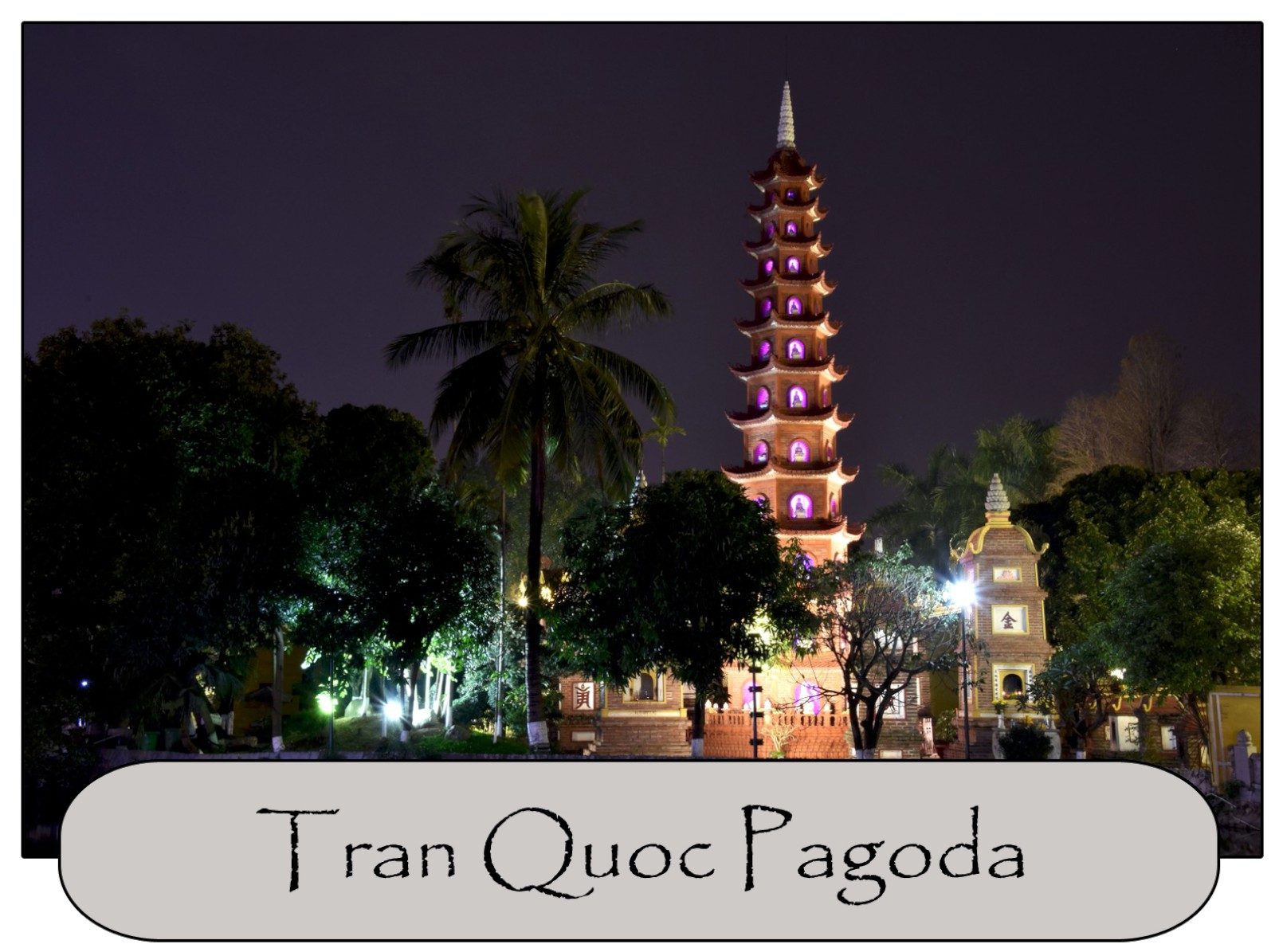The Temple of Literature is a place of study rather than a religious landmark and was originally built in 1070 as a university dedicated to Confucius. Originally the university only accepted students from elite and royal families but later became a university for exceptional students from all over the nation.
The layout of the temple is modeled after the birthplace of Confucius with an impressive main entrance and a center path that was once reserved for only the king. The main entry gate to the temple is shown in the photo above and the side gate is shown in the photo below.
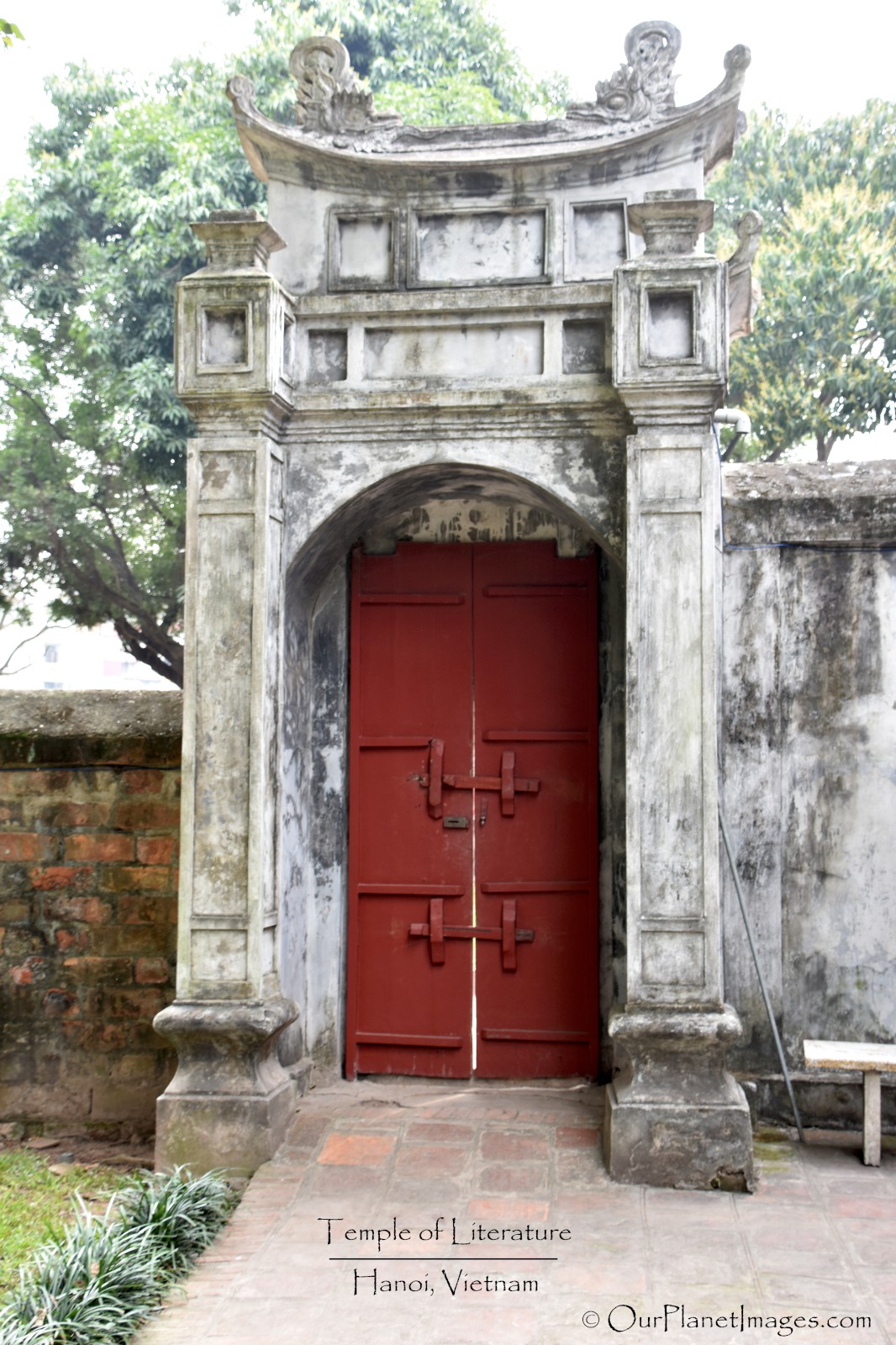
There are five courtyards that make up the temple and each courtyard is separated by a brick wall with a main gate and two smaller gates, one on each side of the main gate.
Courtyards 1 and 2
The first two courtyards are landscaped gardens and have many ancient trees. These gardens are considered a serene place and were designed to provide a place for students to relax. The photo below shows the Dai Trung Gate that separates these two courtyards.
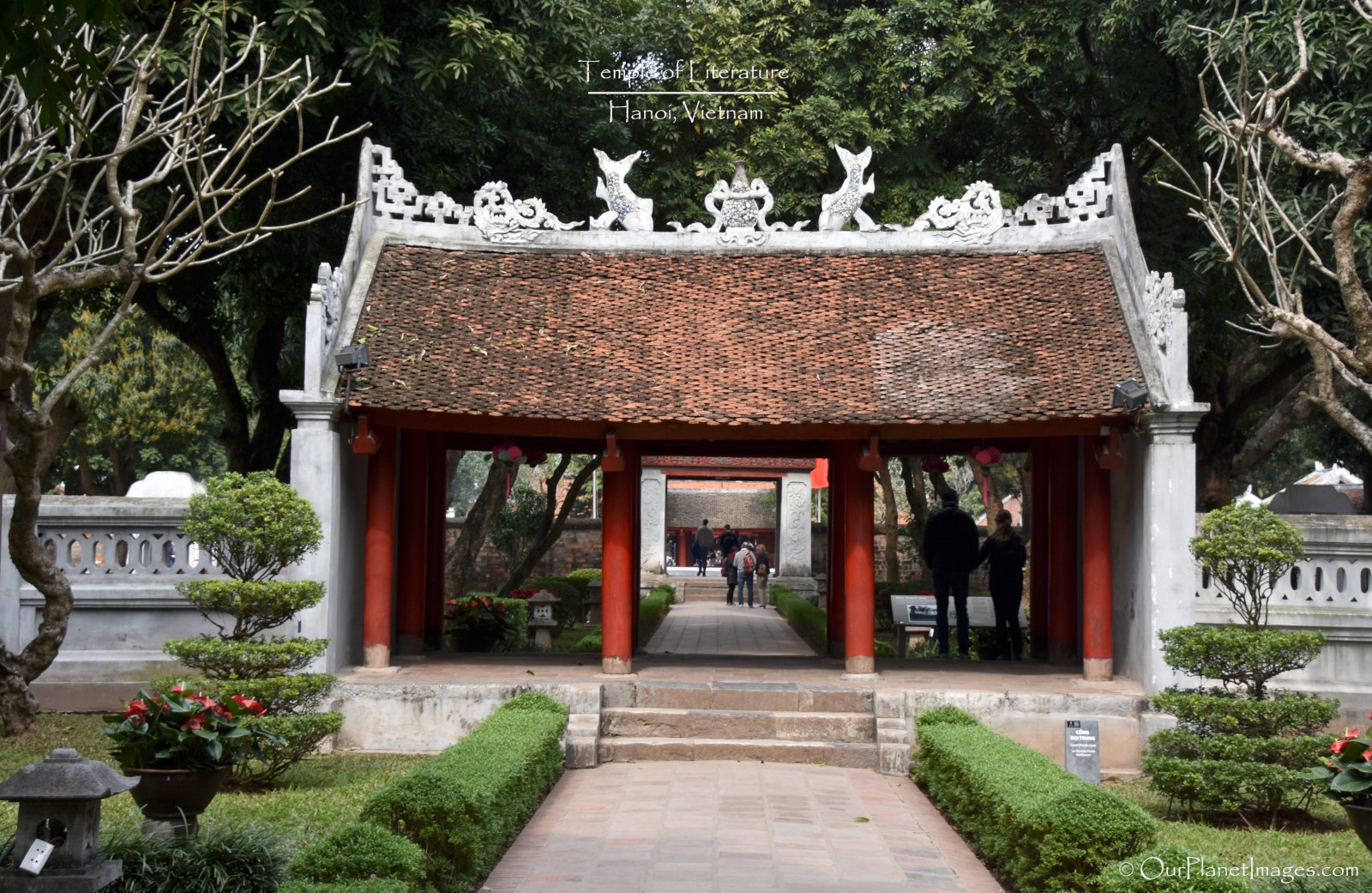
The entry gate to the third courtyard is called the Khue Van Cac pavilion. The first photo below is taken from the second courtyard and includes some of the garden of the second courtyard and the Khue Van Cac pavilion. The next two photos are taken from the third courtyard and include a small portion of the pond known as the “Well of Heavenly Clarity”. The forth photo is indicates the detailed carvings on the legs of the pavilion.
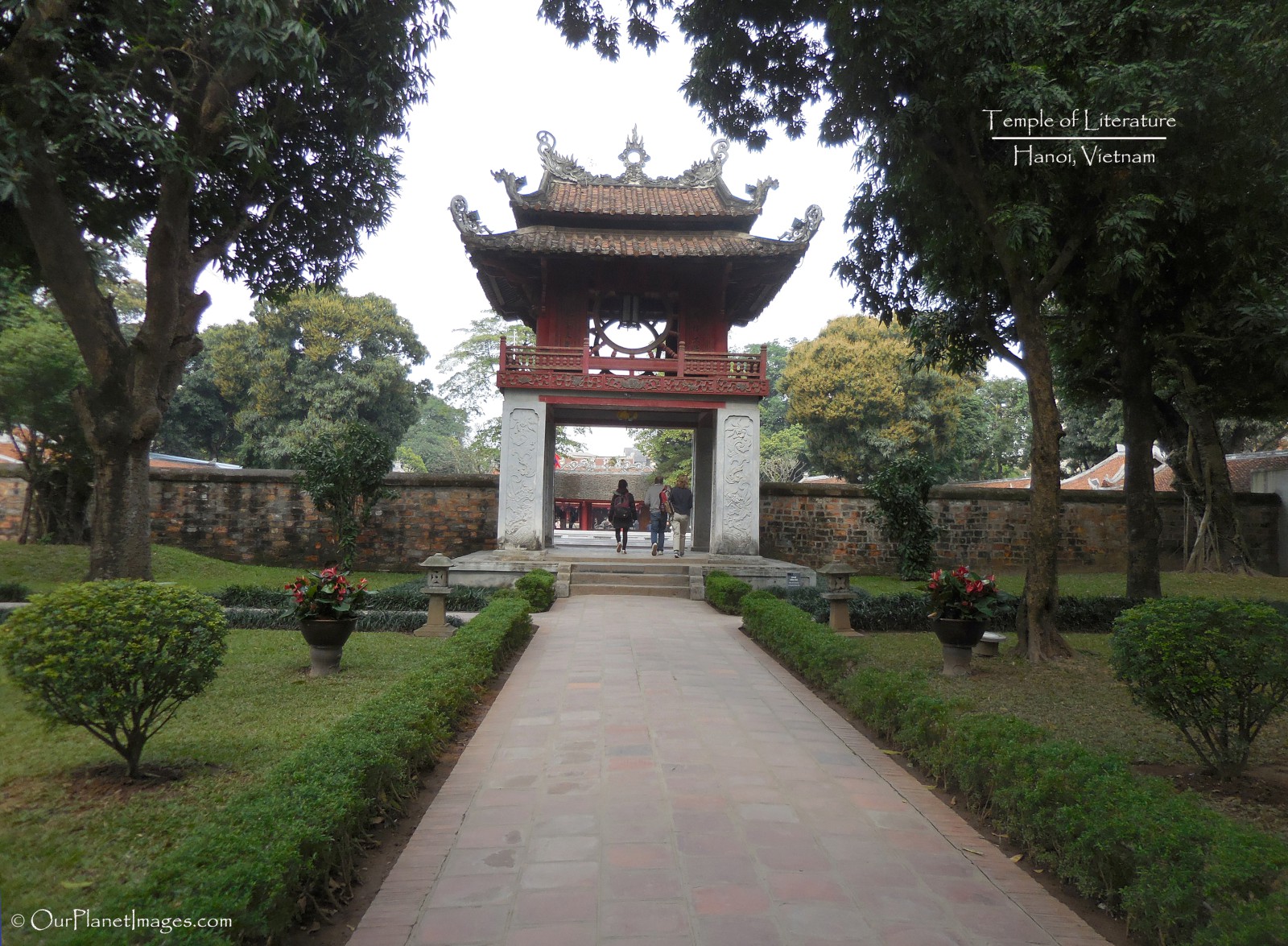
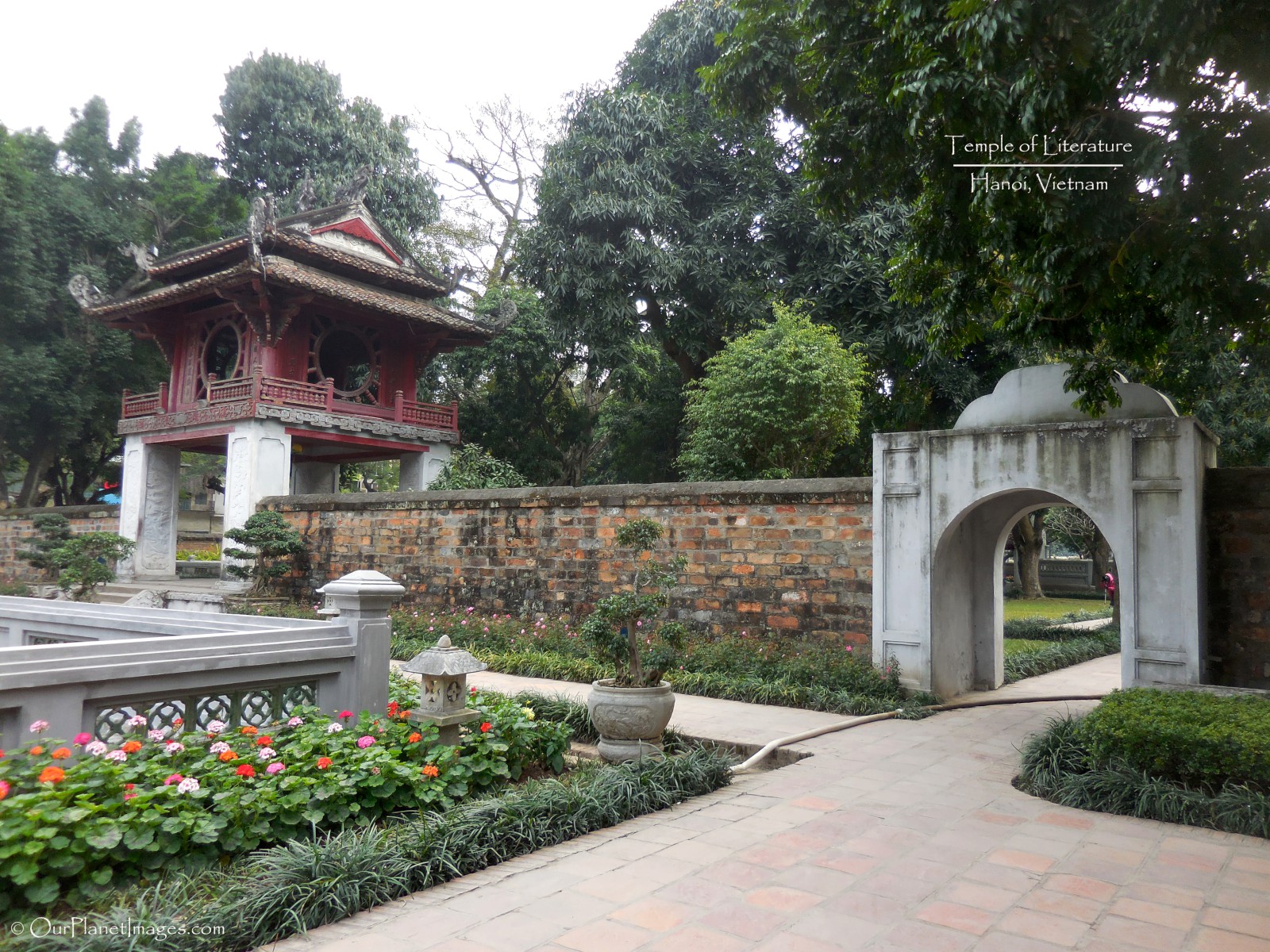
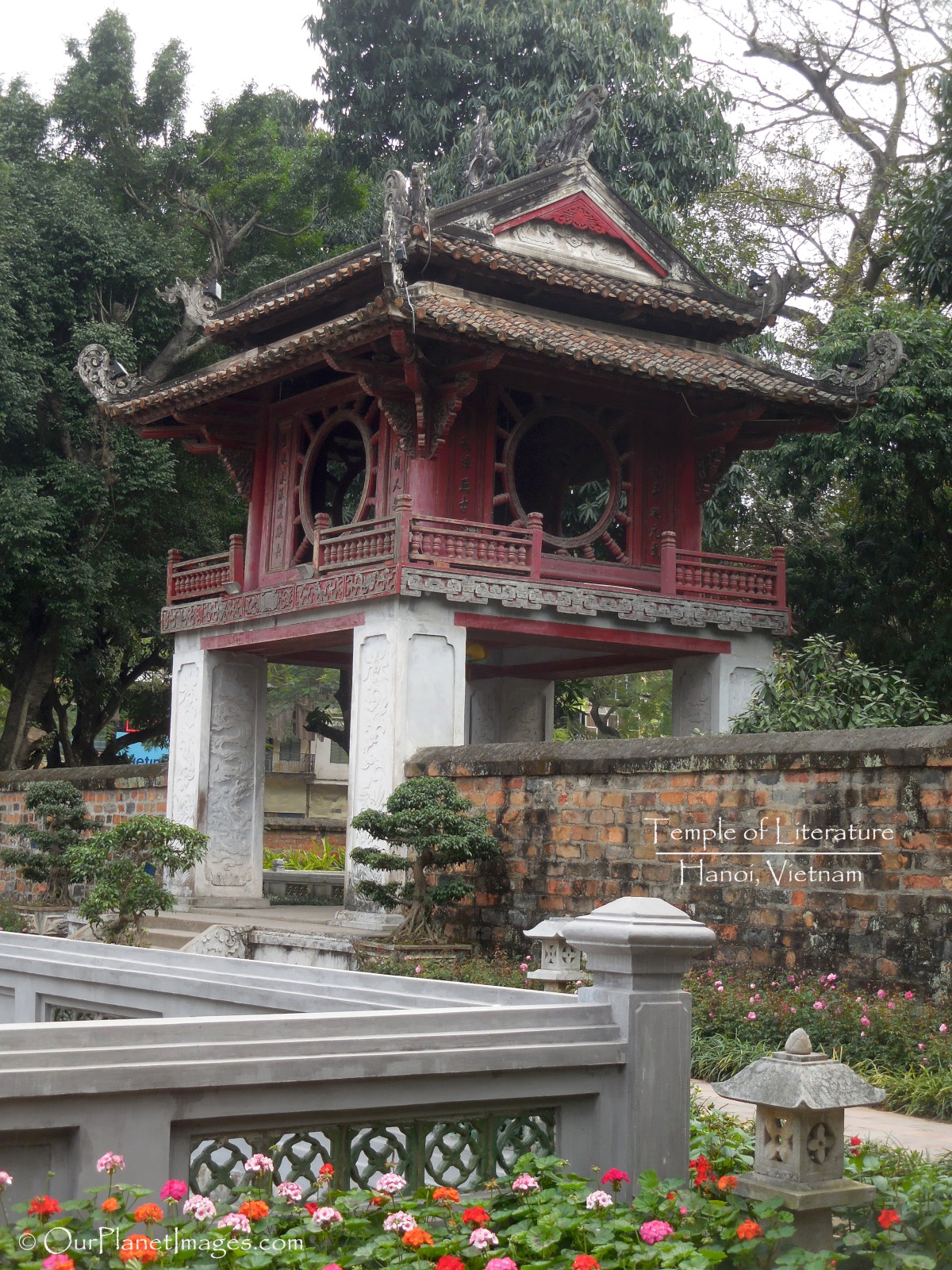
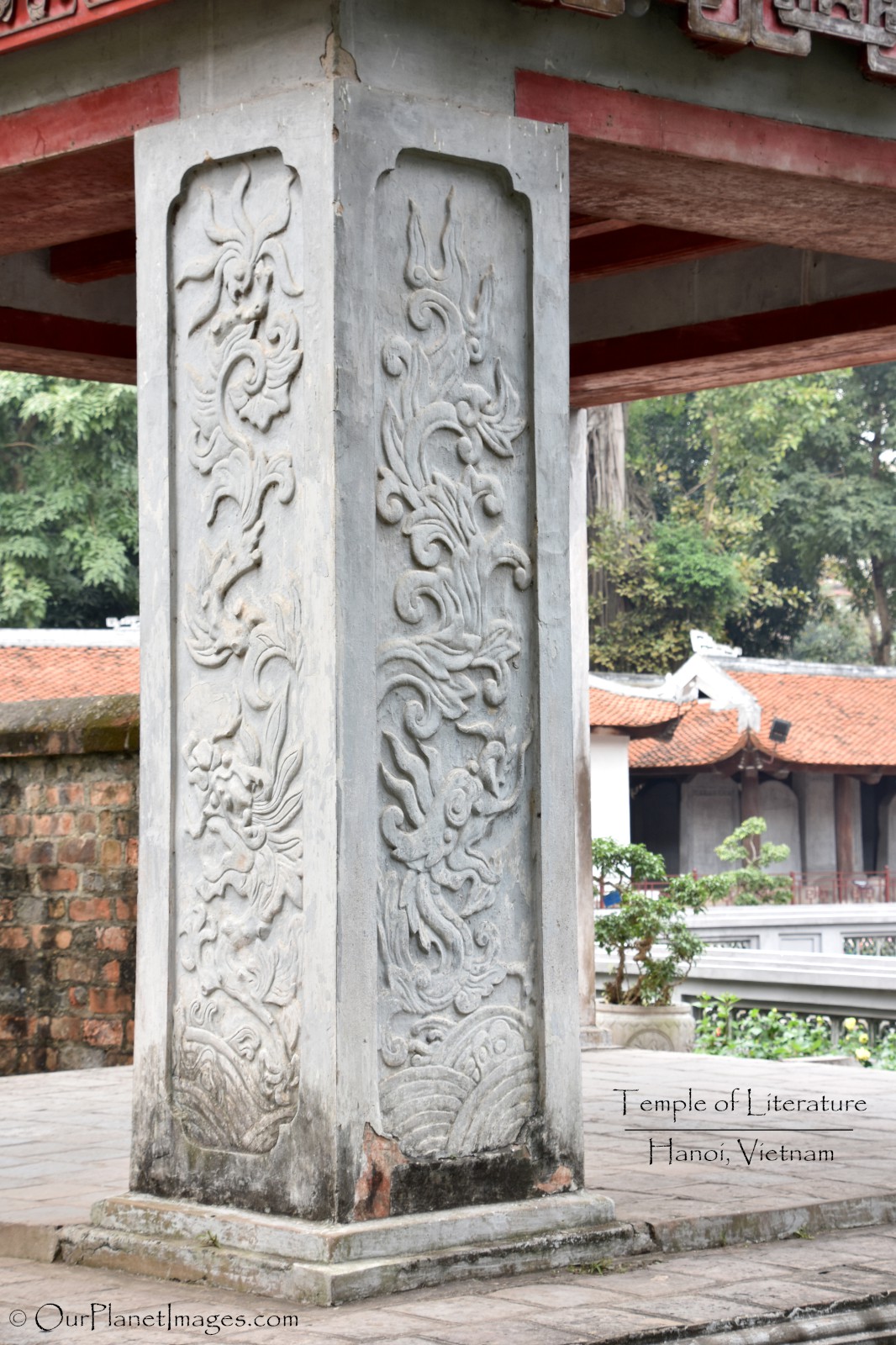
Third Courtyard
The third courtyard is known primarily for the Doctor’s Houses” that flanks both sides of the “Well of Heavenly Clarity” pond. The Doctor’s houses contains 82 stone slabs standing on top of stone turtles. The names and origins of 1307 doctors are carved on the stone slabs from 82 examination courses from 1442 to 1779 when the university closed.
The first photo below is of the Well of Heavenly Clarity pond and shows the Doctor’s houses in the background. The other photos are all of the doctor’s houses and the stone slabs supported by the stone turtles.
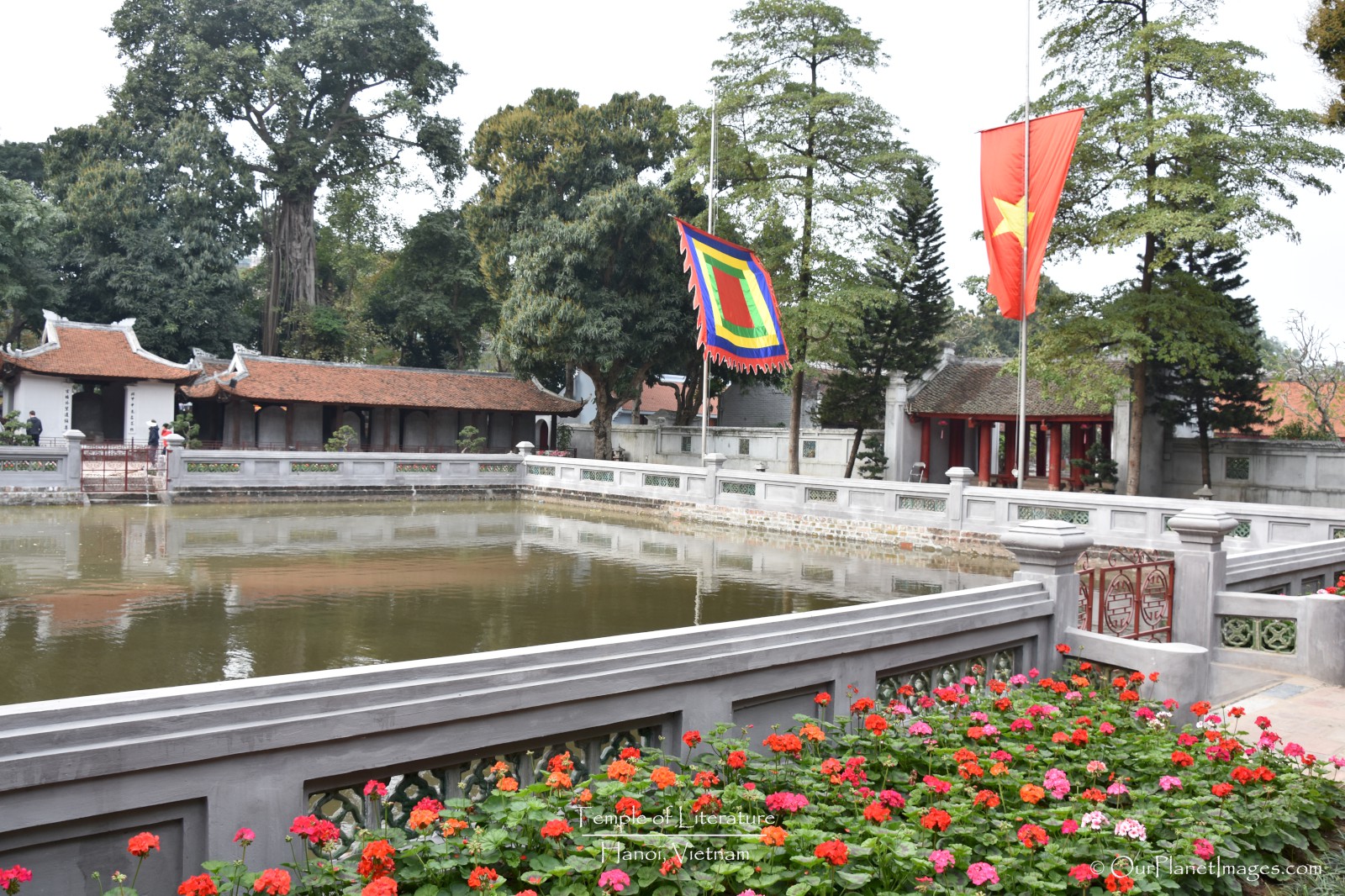
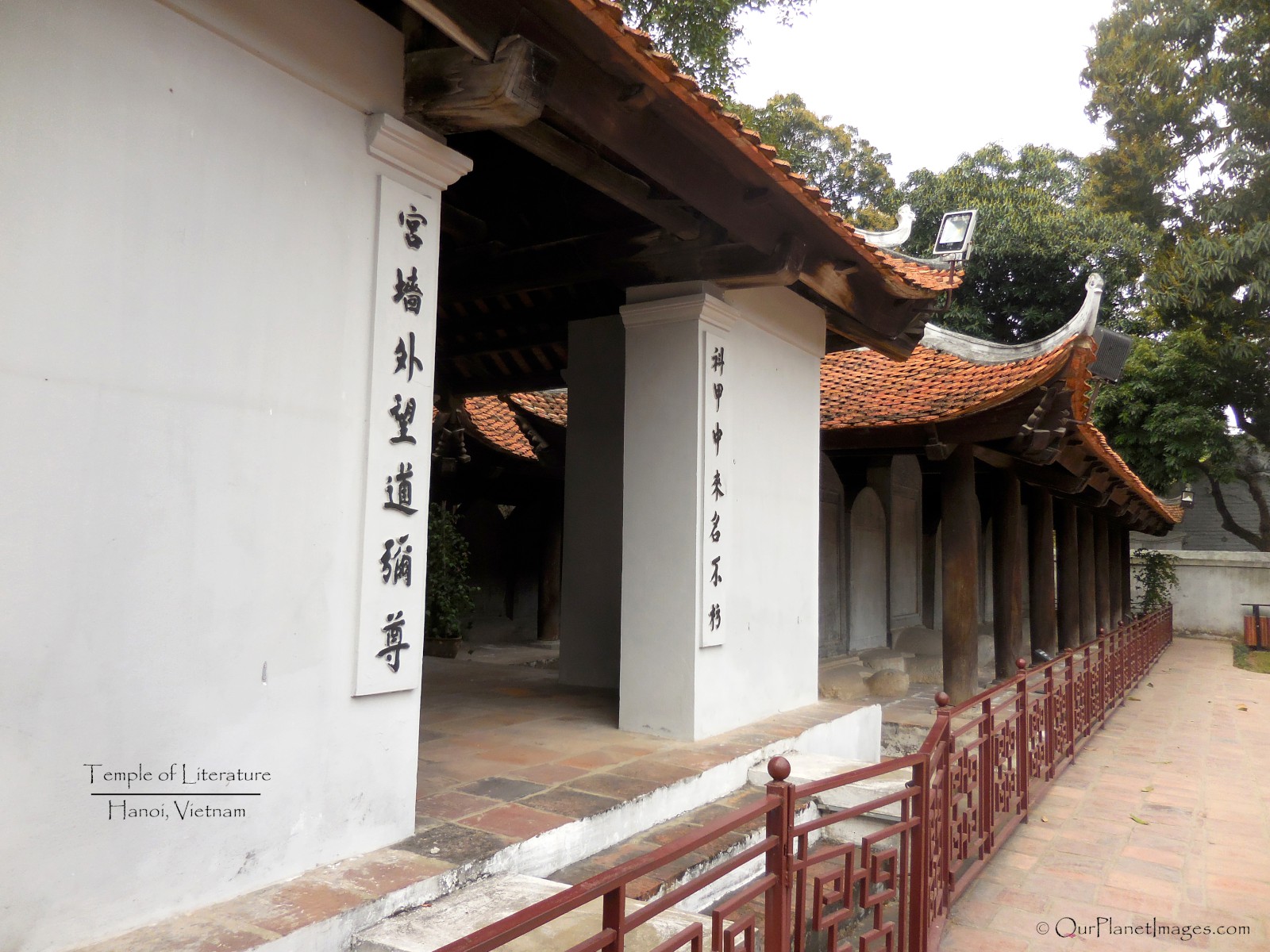
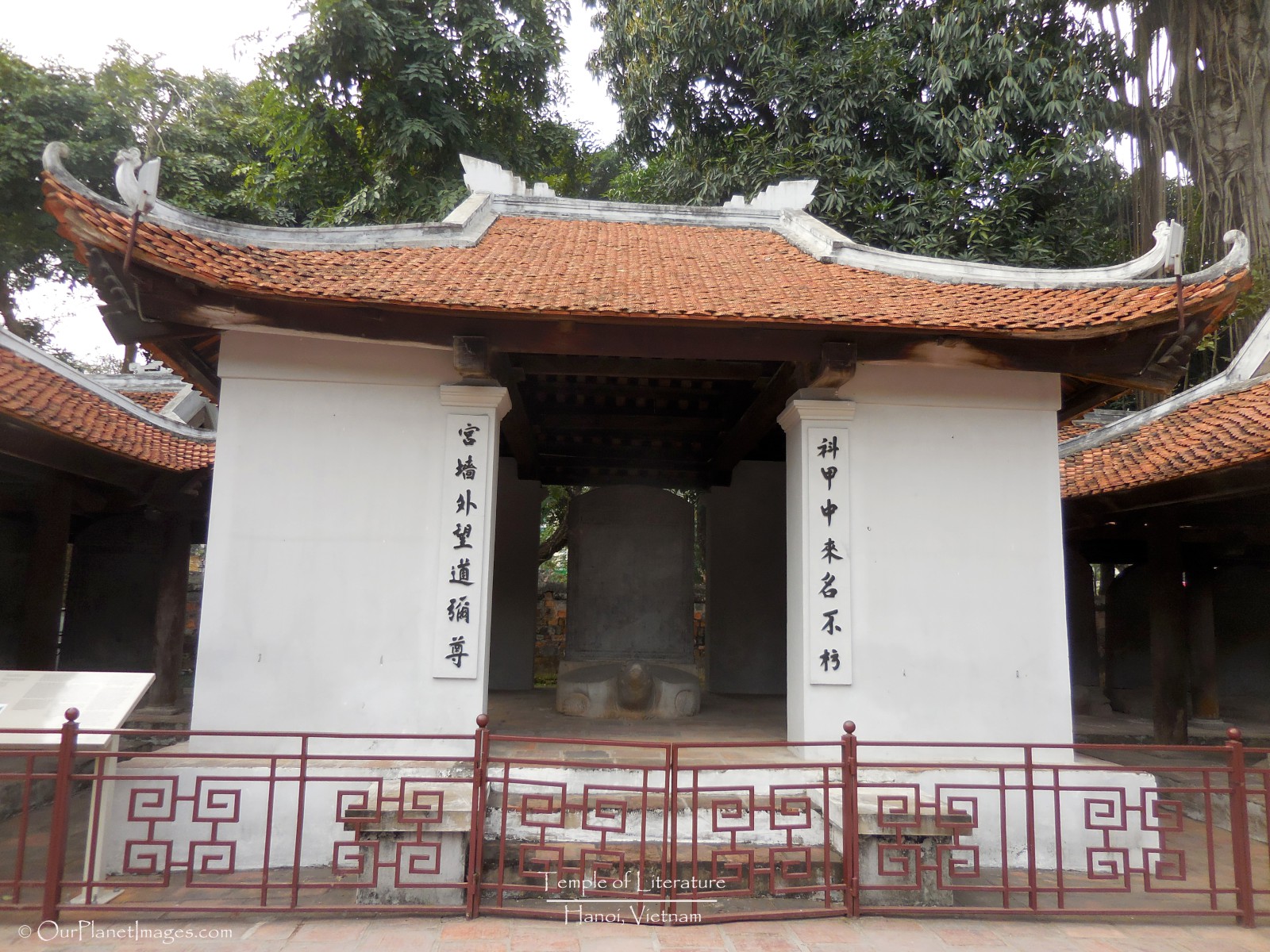
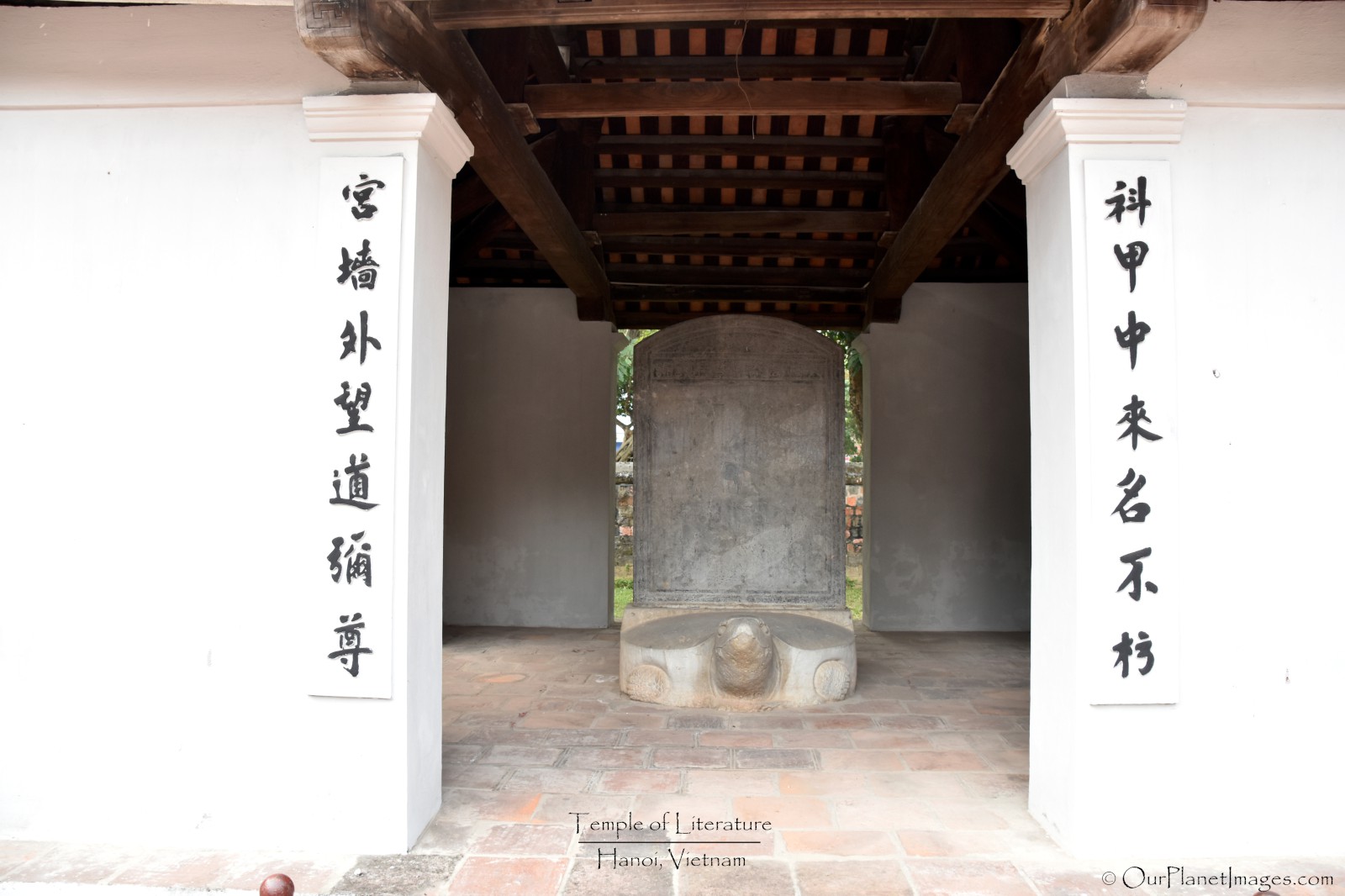
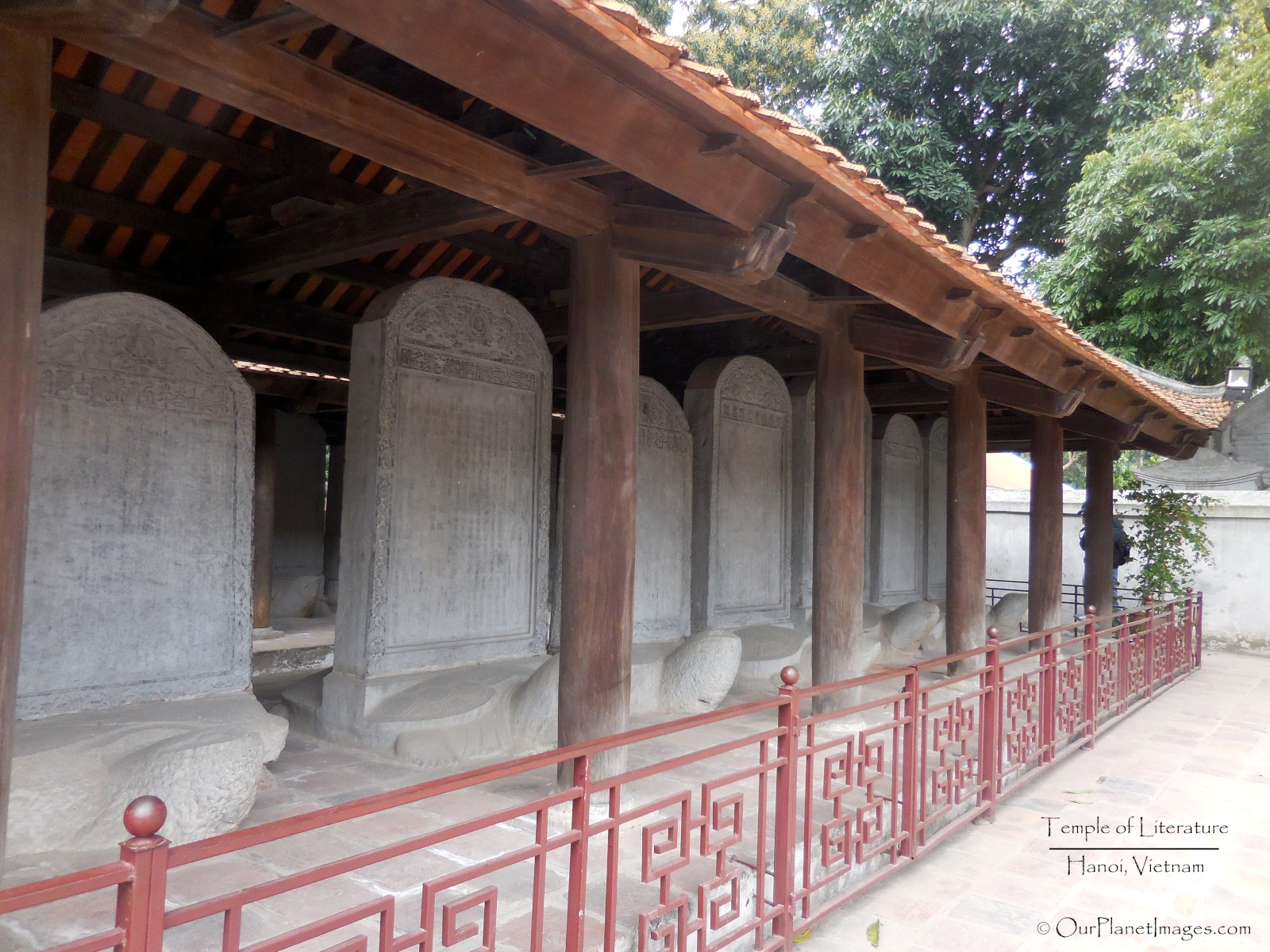

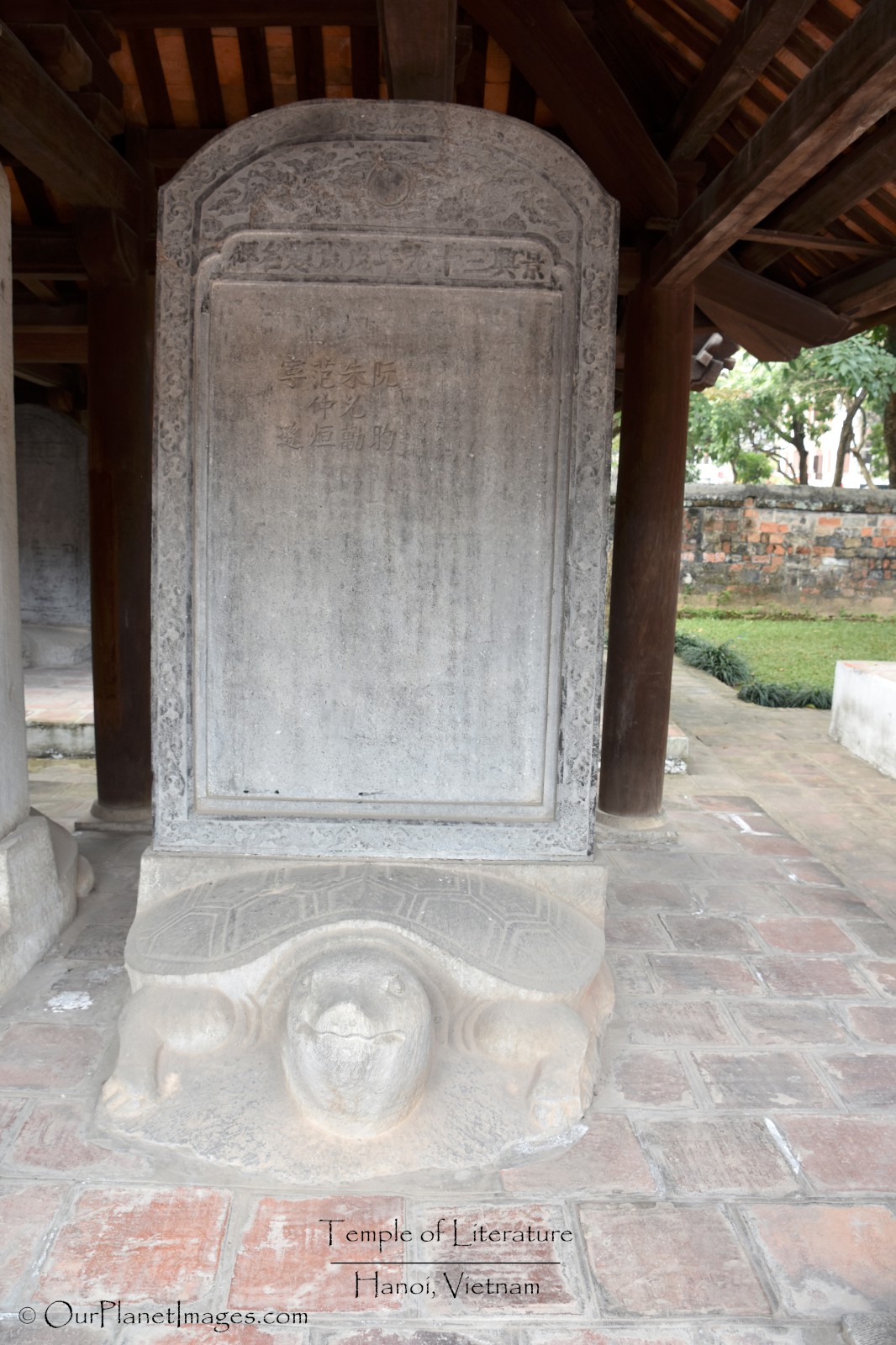
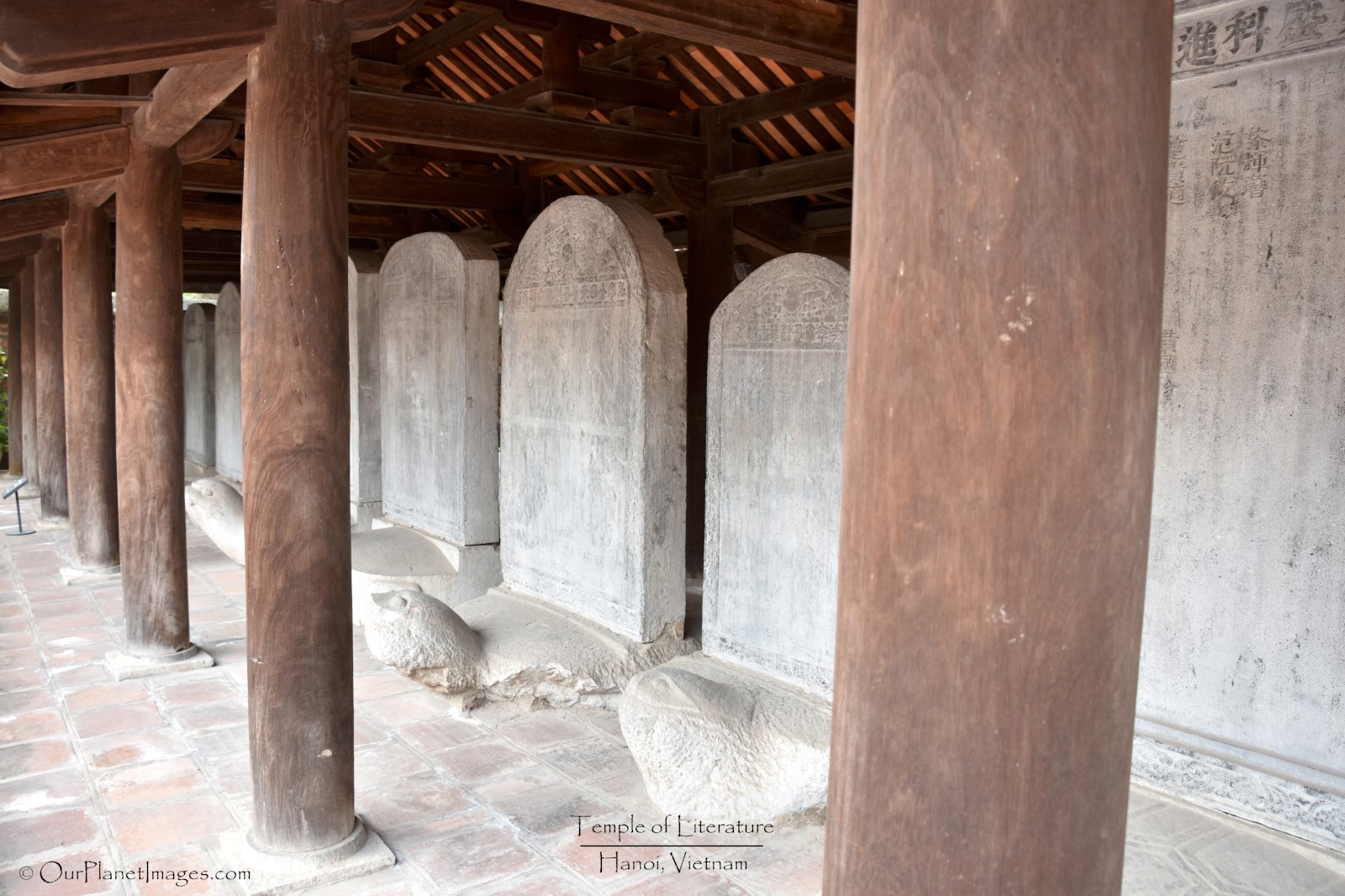
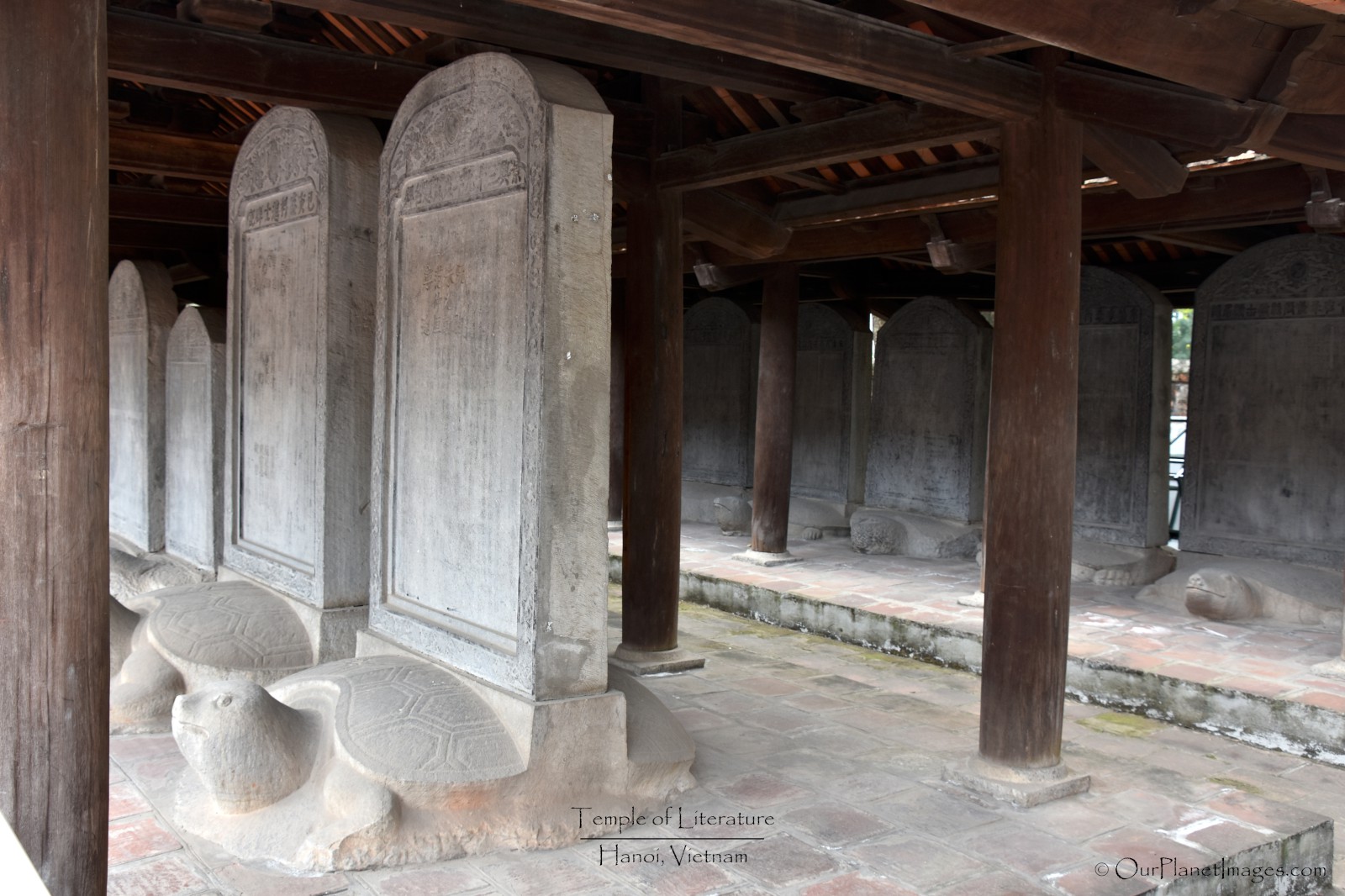
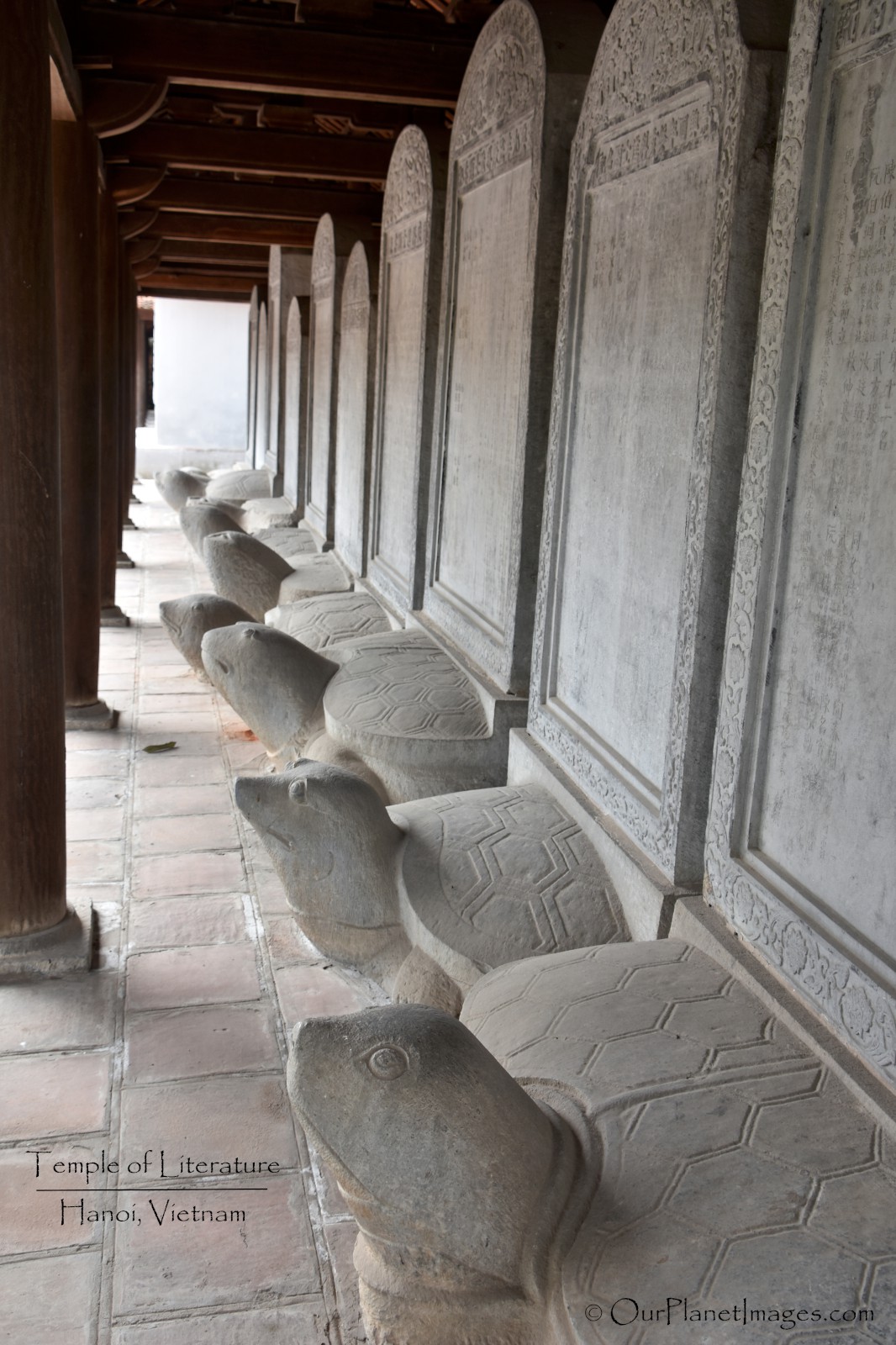
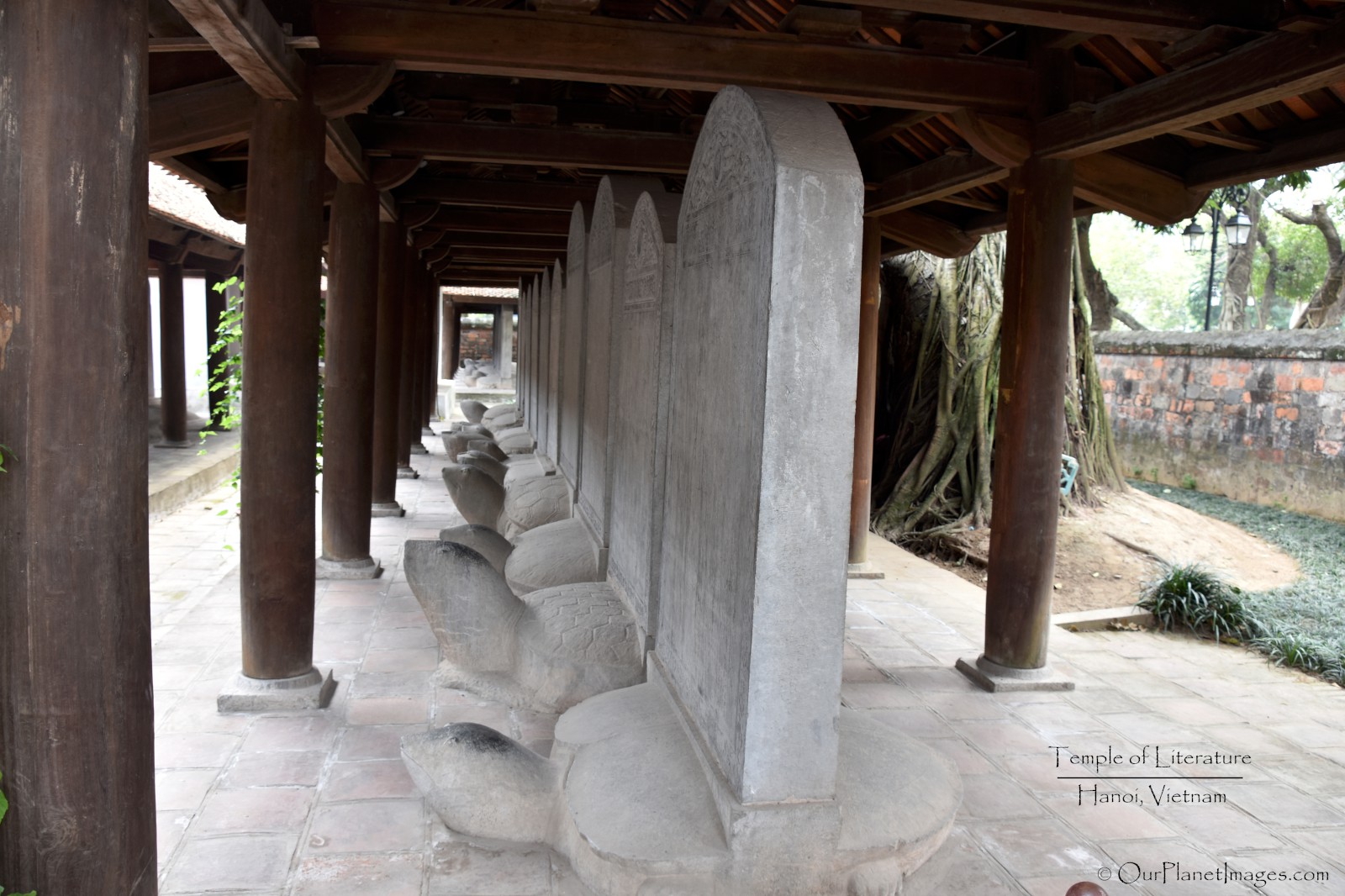
In order to enter the fourth courtyard it is necessary to pass through an entry gate with stone guards on each side of the gate.
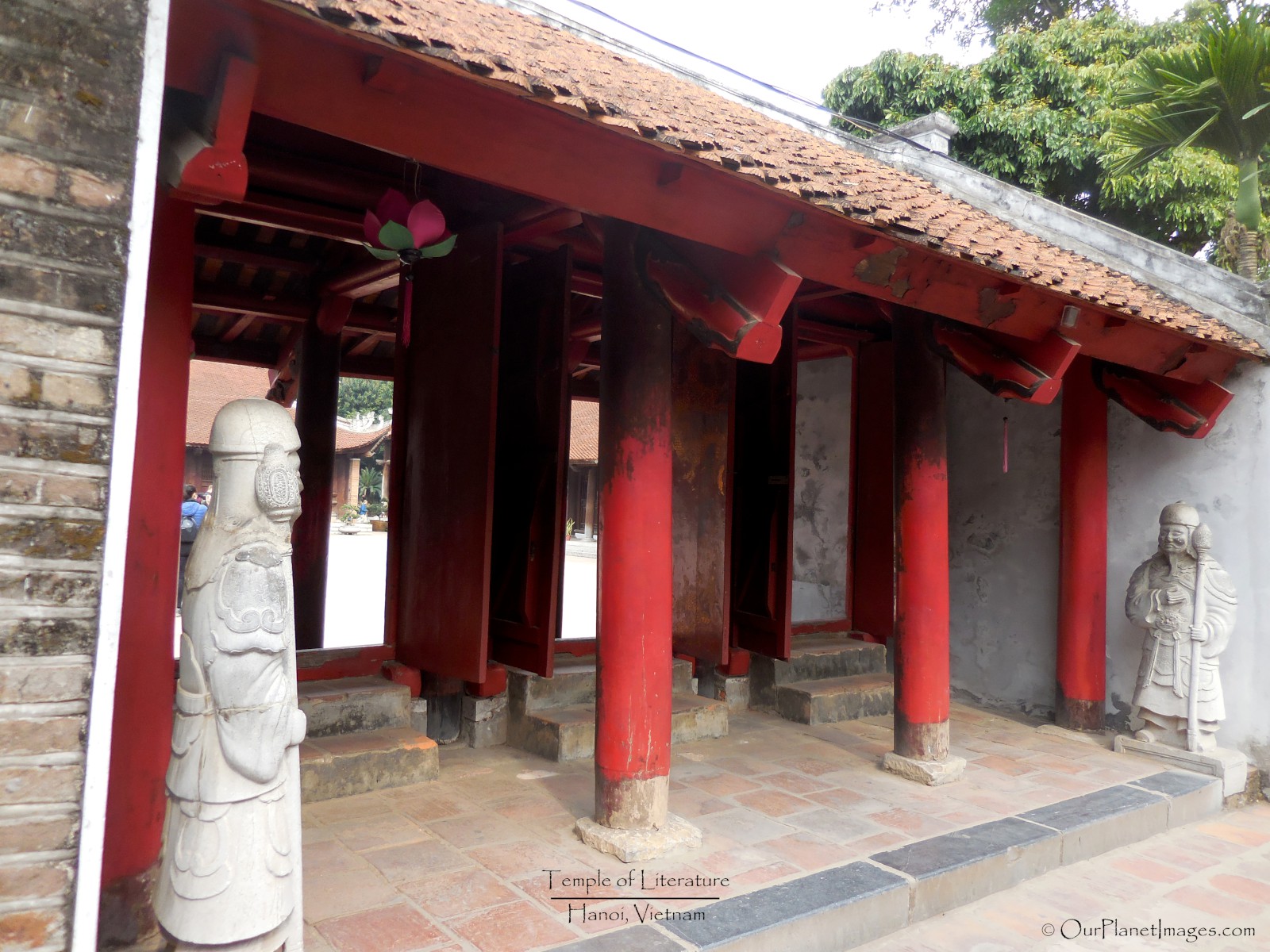
Fourth Courtyard
The fourth courtyard is called the Sage Courtyard and features a statue of Confucius and The House of Ceremonies. The House of Ceremonies is my favorite building in the complex and combines simplicity with elegance.
This courtyard is bordered on either side by large pavilions which originally housed altars of 72 honored disciples of Confucius but now these pavilions contain offices, a gift shop and a small museum. In front of the pavilions are decorative plants and statues and shown in the photos below.
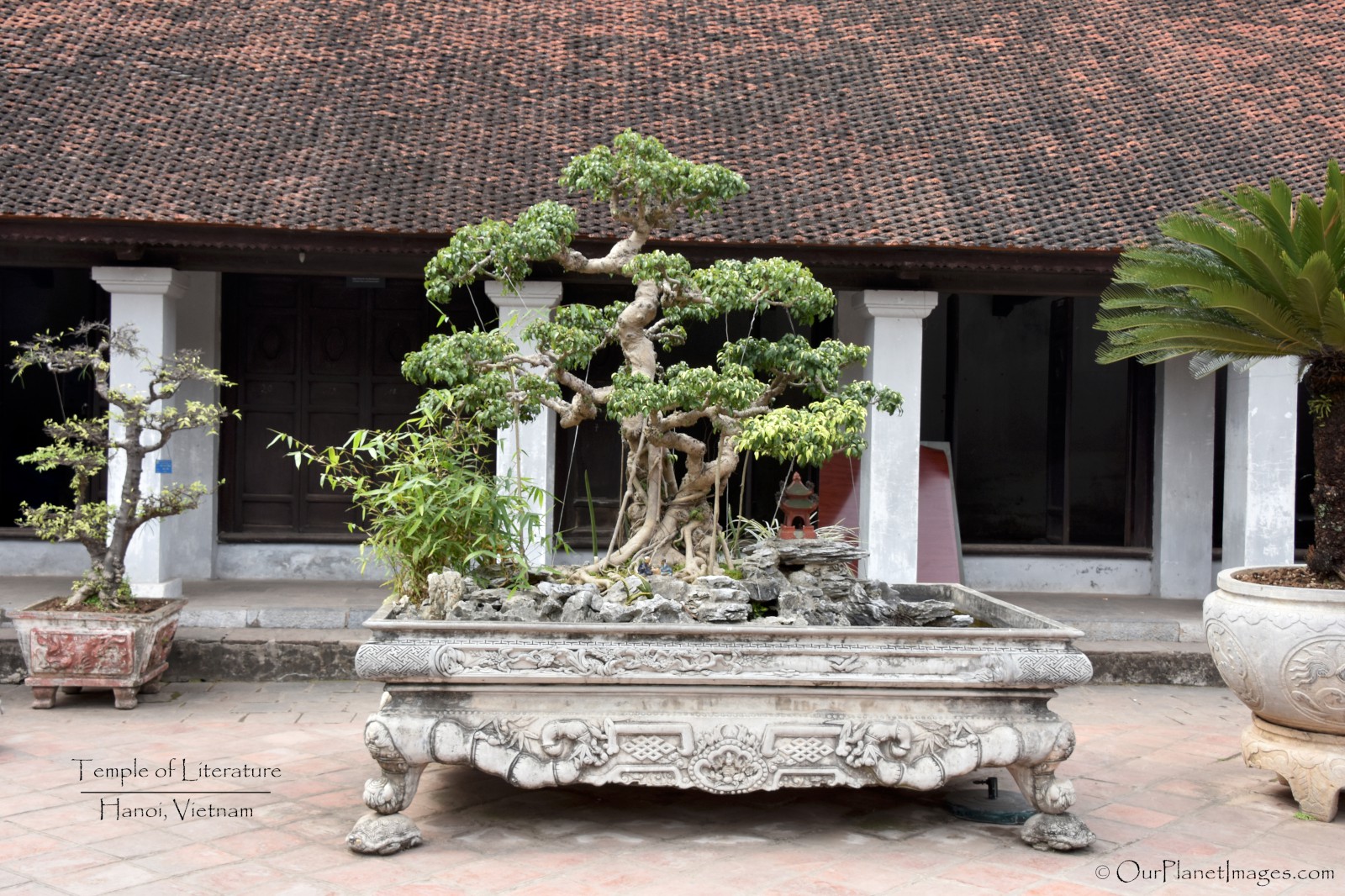
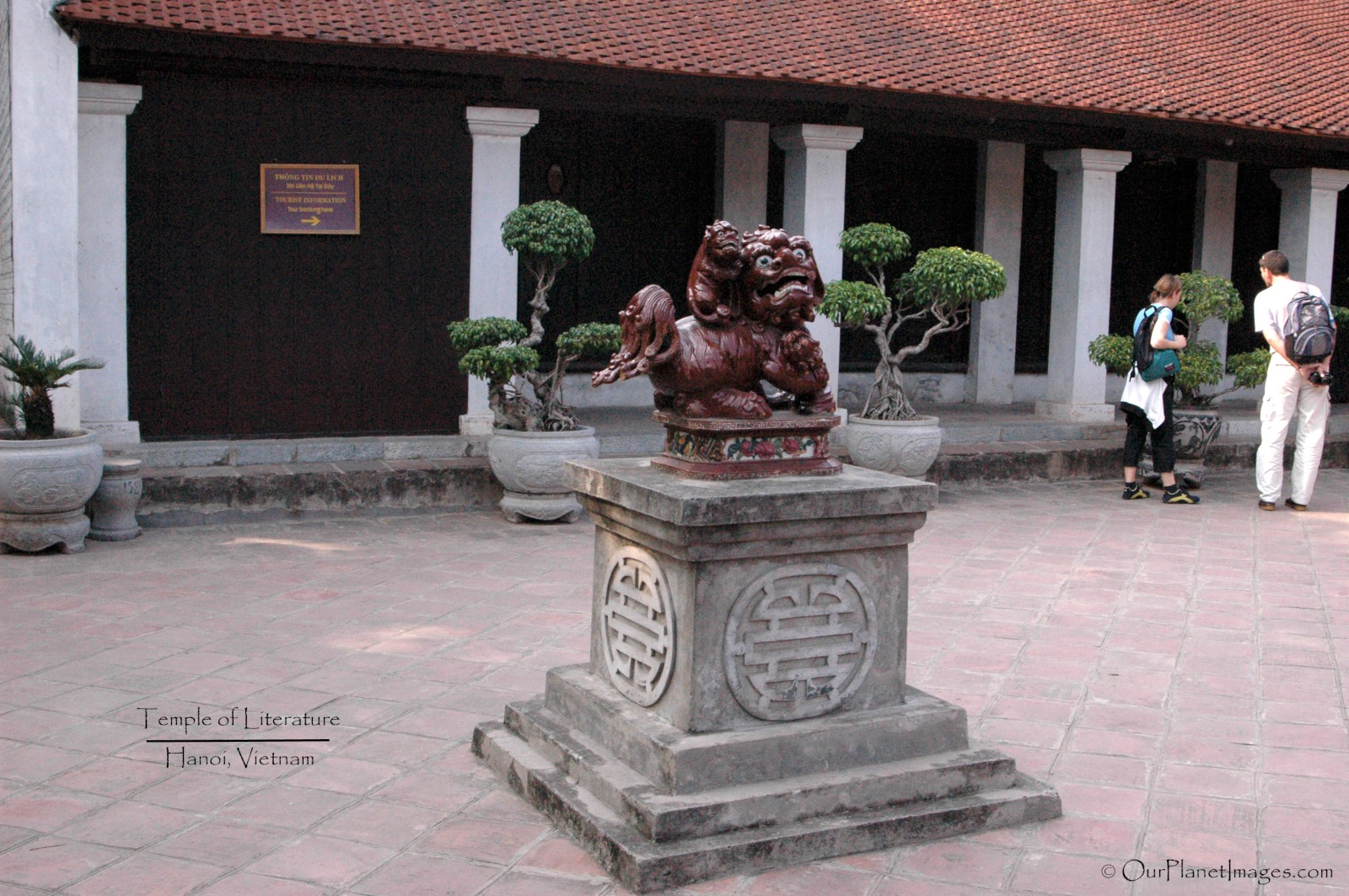
On the opposite side of the courtyard from the entry gate is the House of Ceremonies which is a large building with dragons on top and on the curved tips of the roof. The sides of the building are decorated with red turned window posts and Asian art.
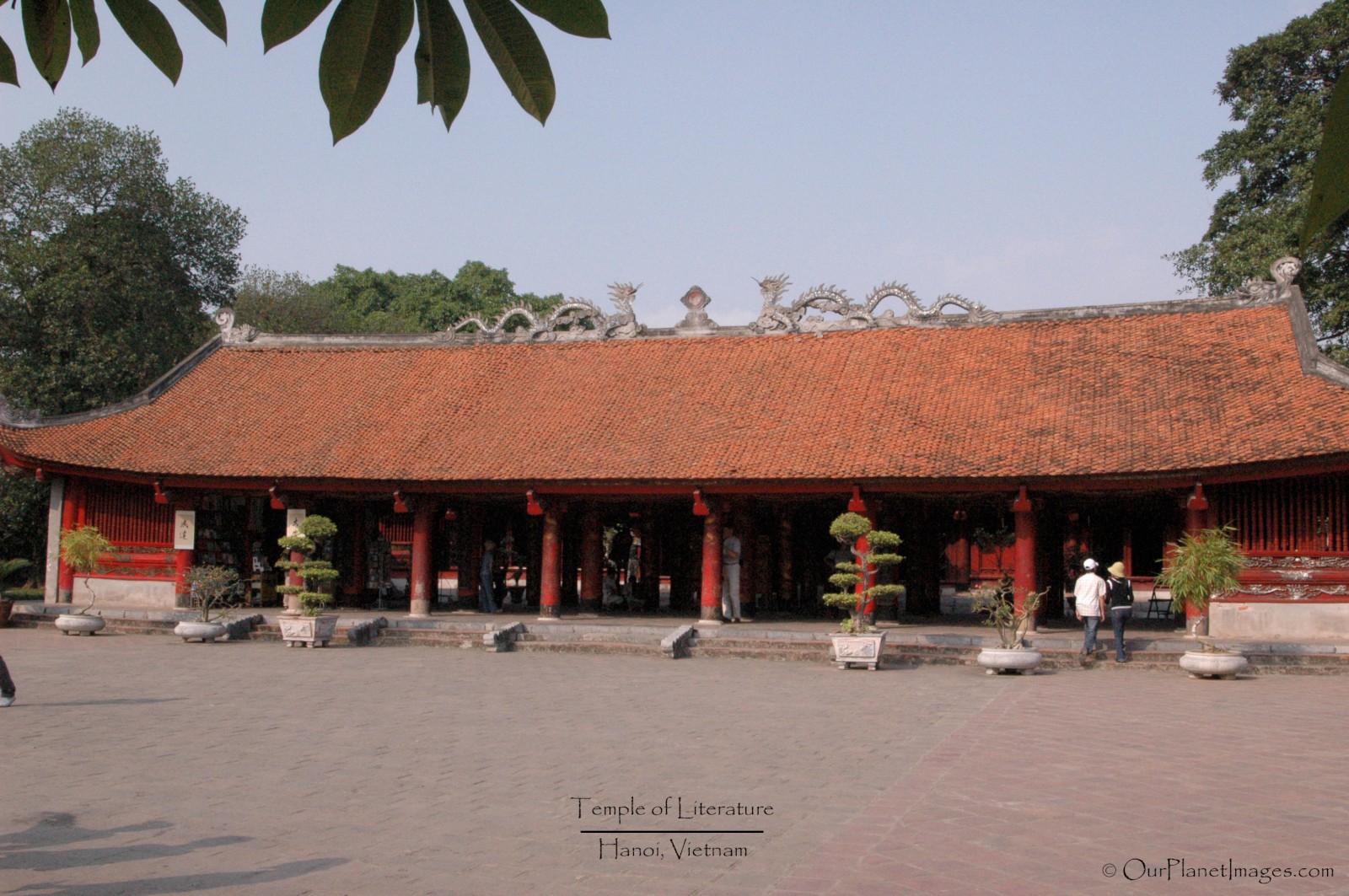
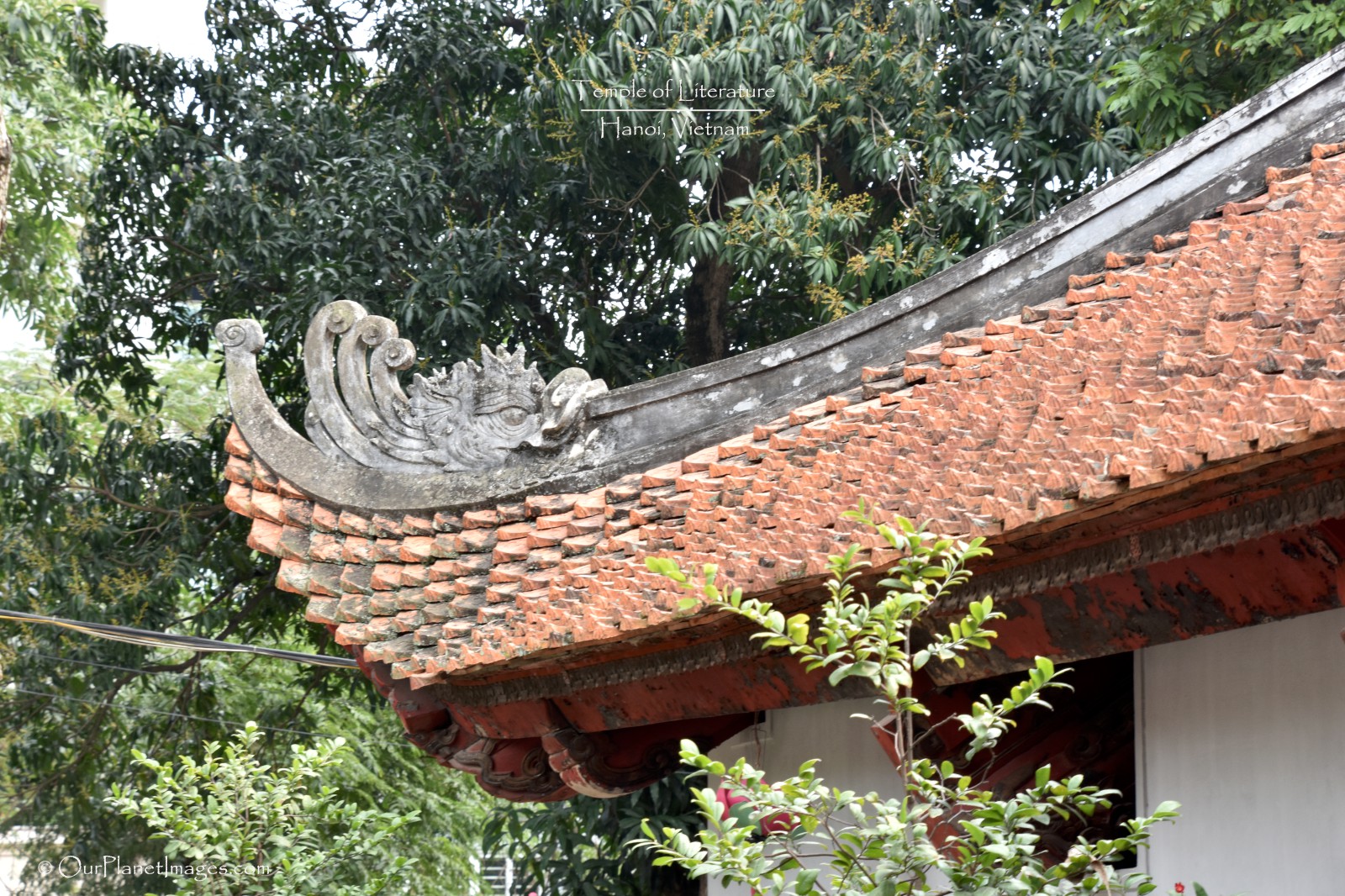
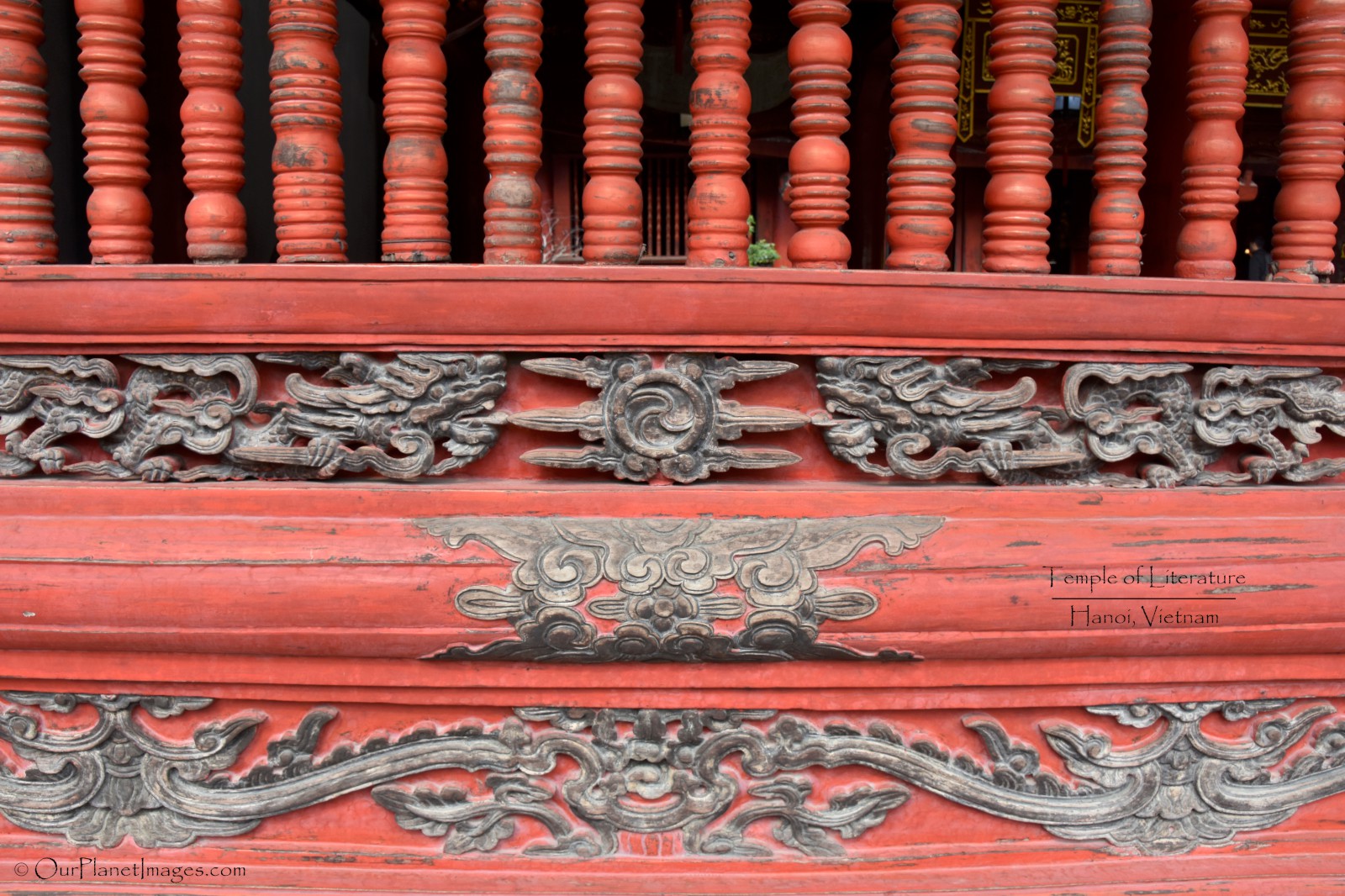
The House of Ceremonies on the inside is decorated with beautiful lacquered red columns that have golden designs. Antique style lanterns hang from wood beam ceiling and in the center of the building there is an altar provided for worship.
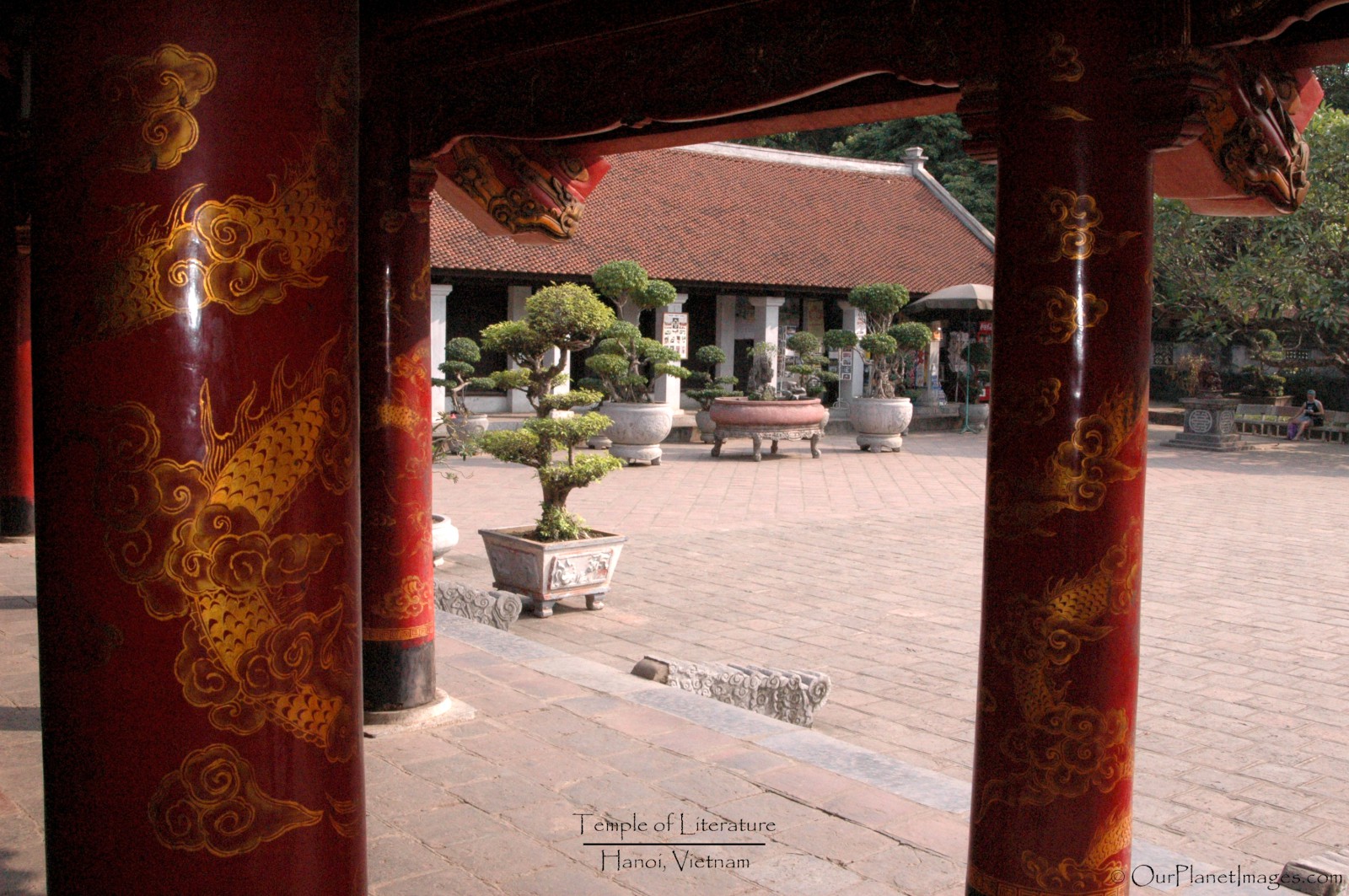
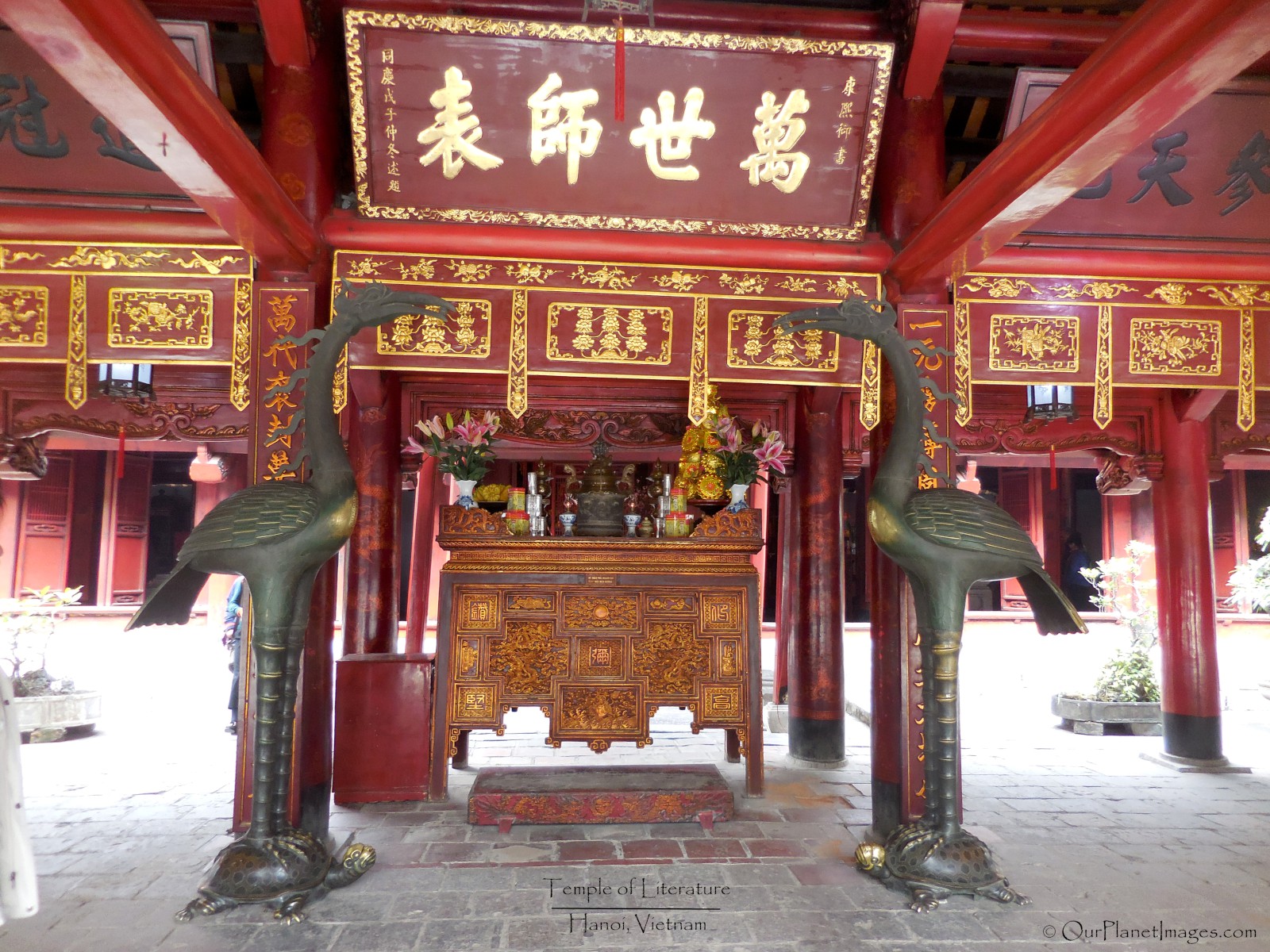
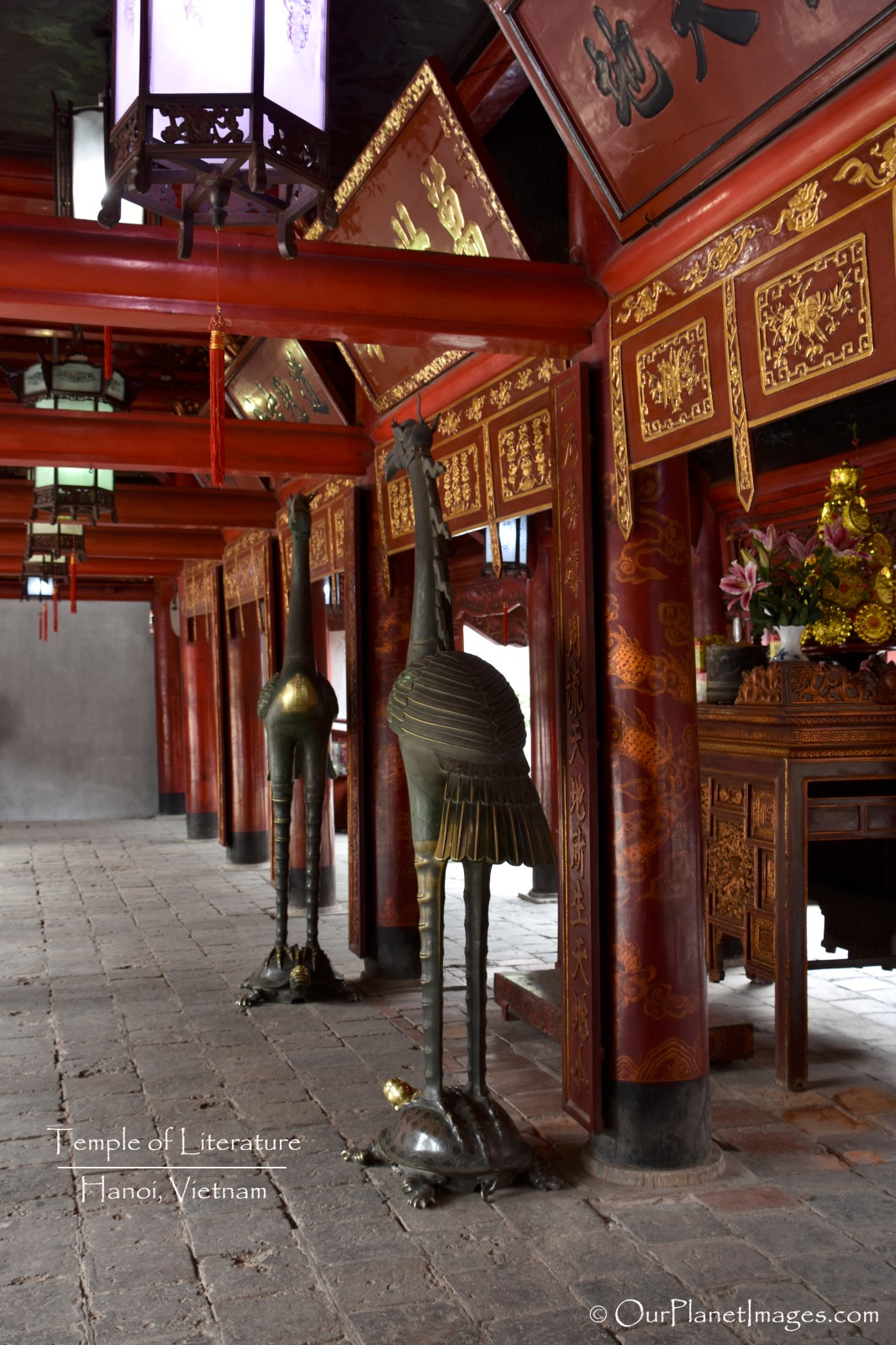

Fifth Courtyard
The last courtyard contained Vietnam’s first university but this was destroyed in 1947. The present building was built in 1999 and is now called Thai Hoc House which is a two story building.
This building has two levels. The ground floor has a statue of Chu Van An who was a famous teacher known for his devotion to teaching.

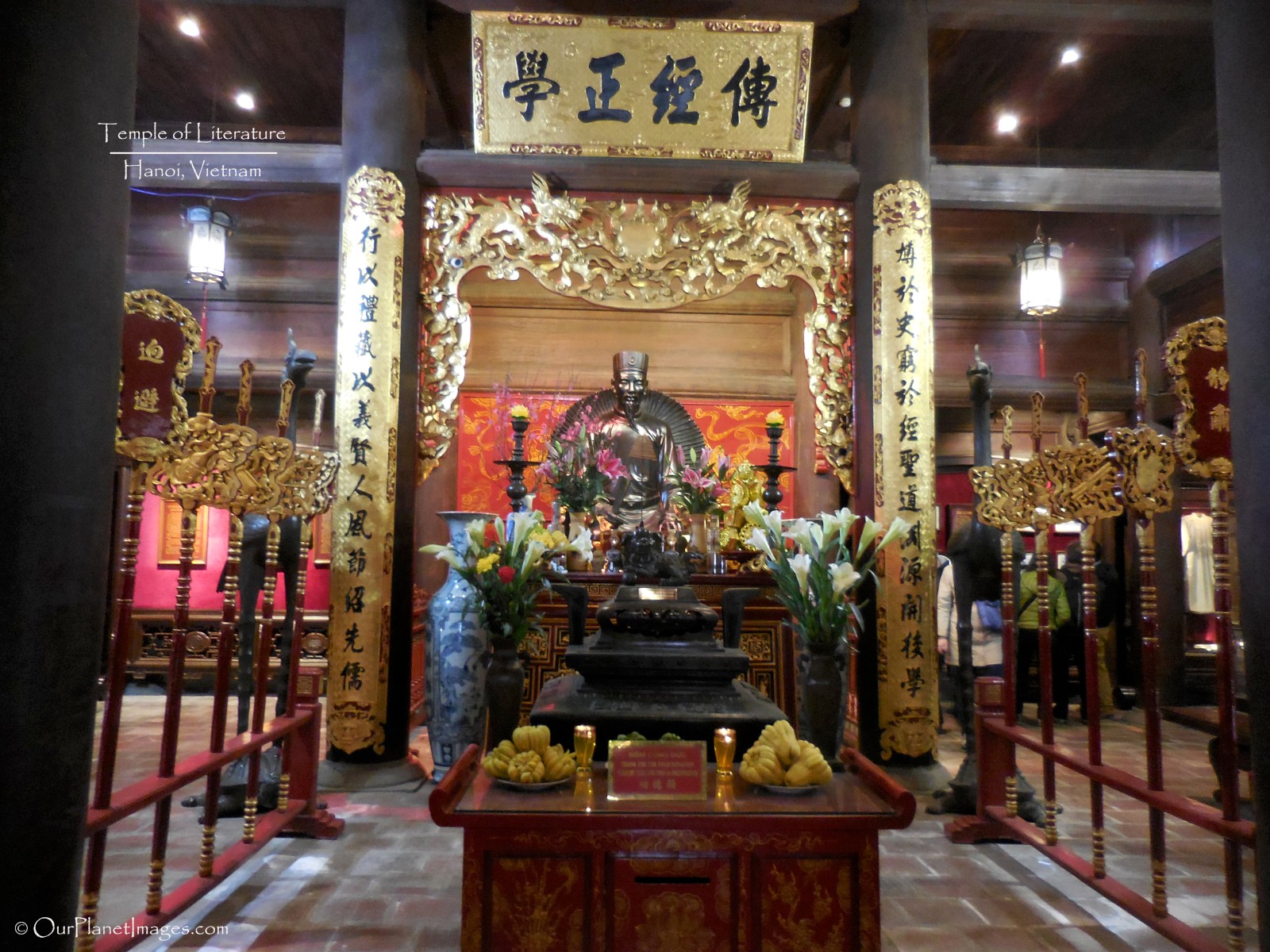
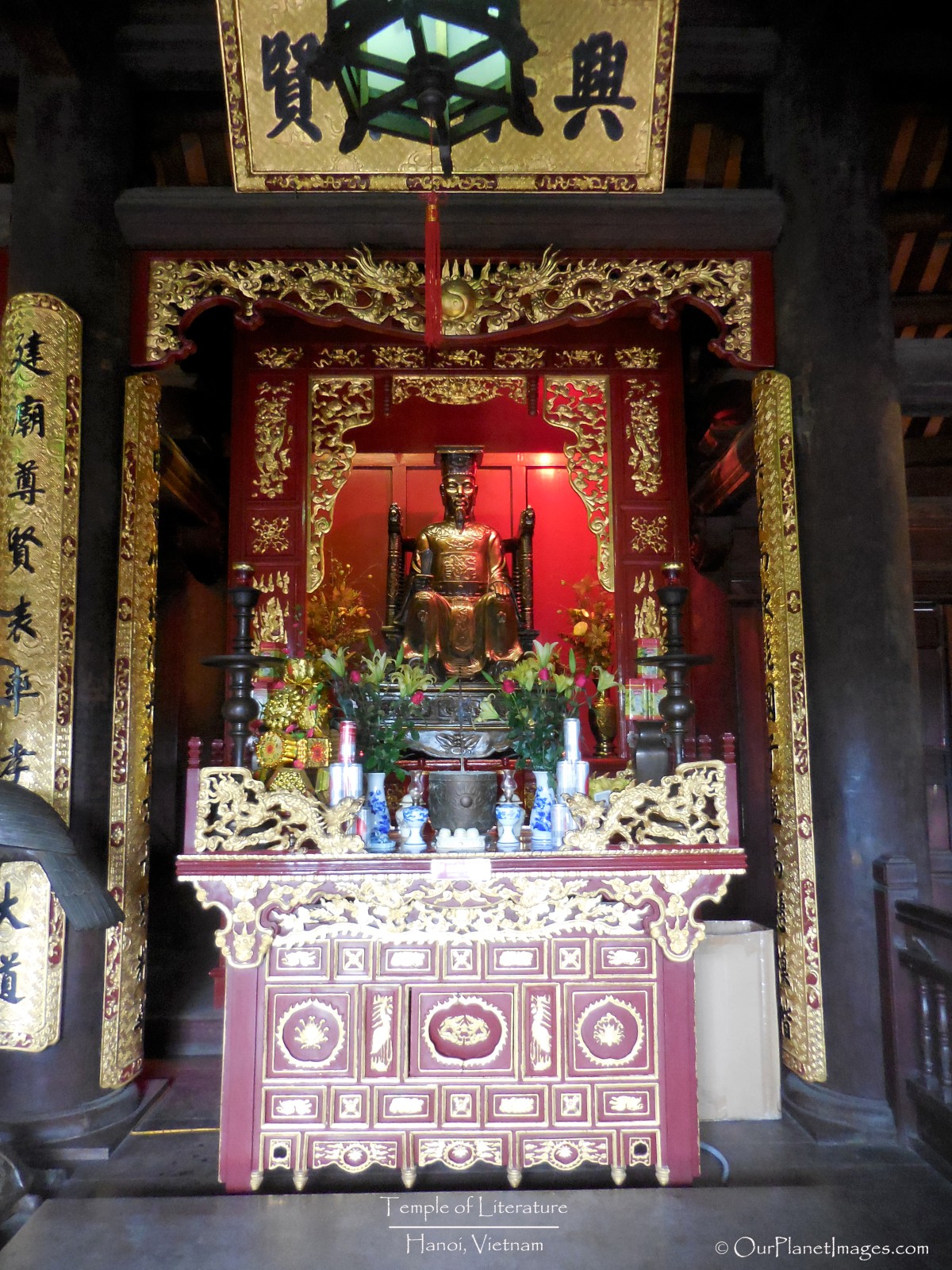
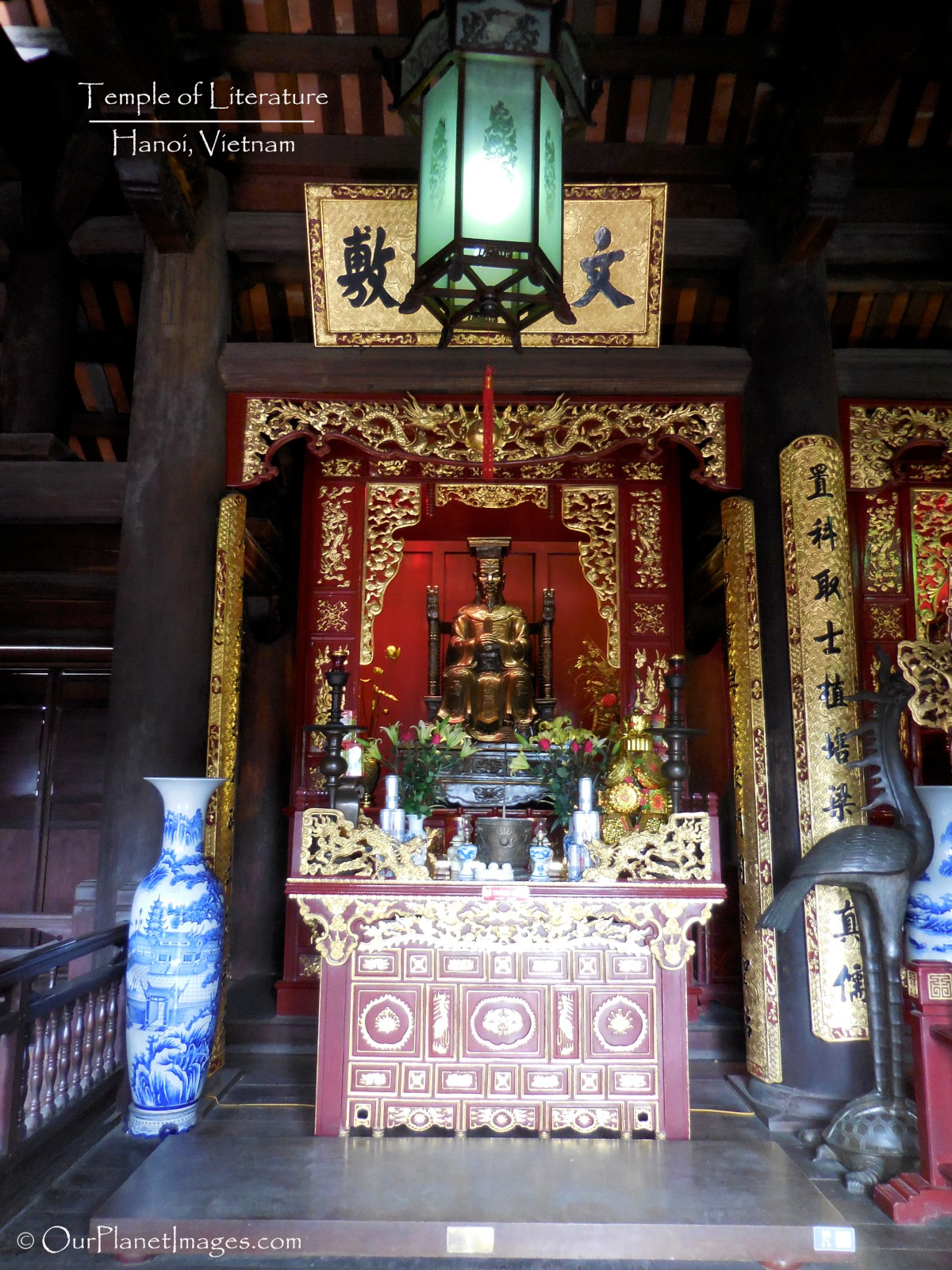
The upper floor is dedicated to three monarchs who contributed most to the foundation of the temple and academy.
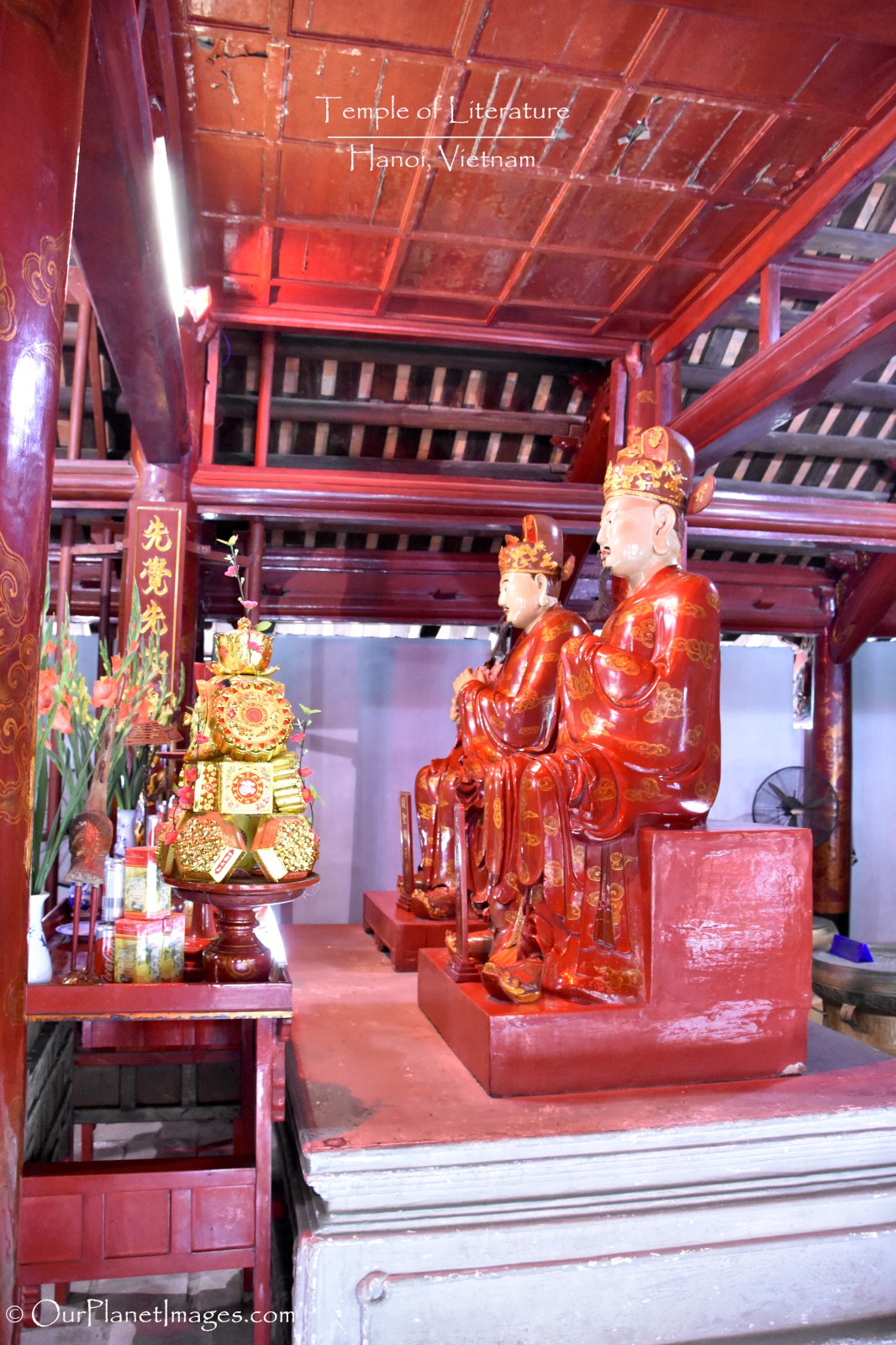
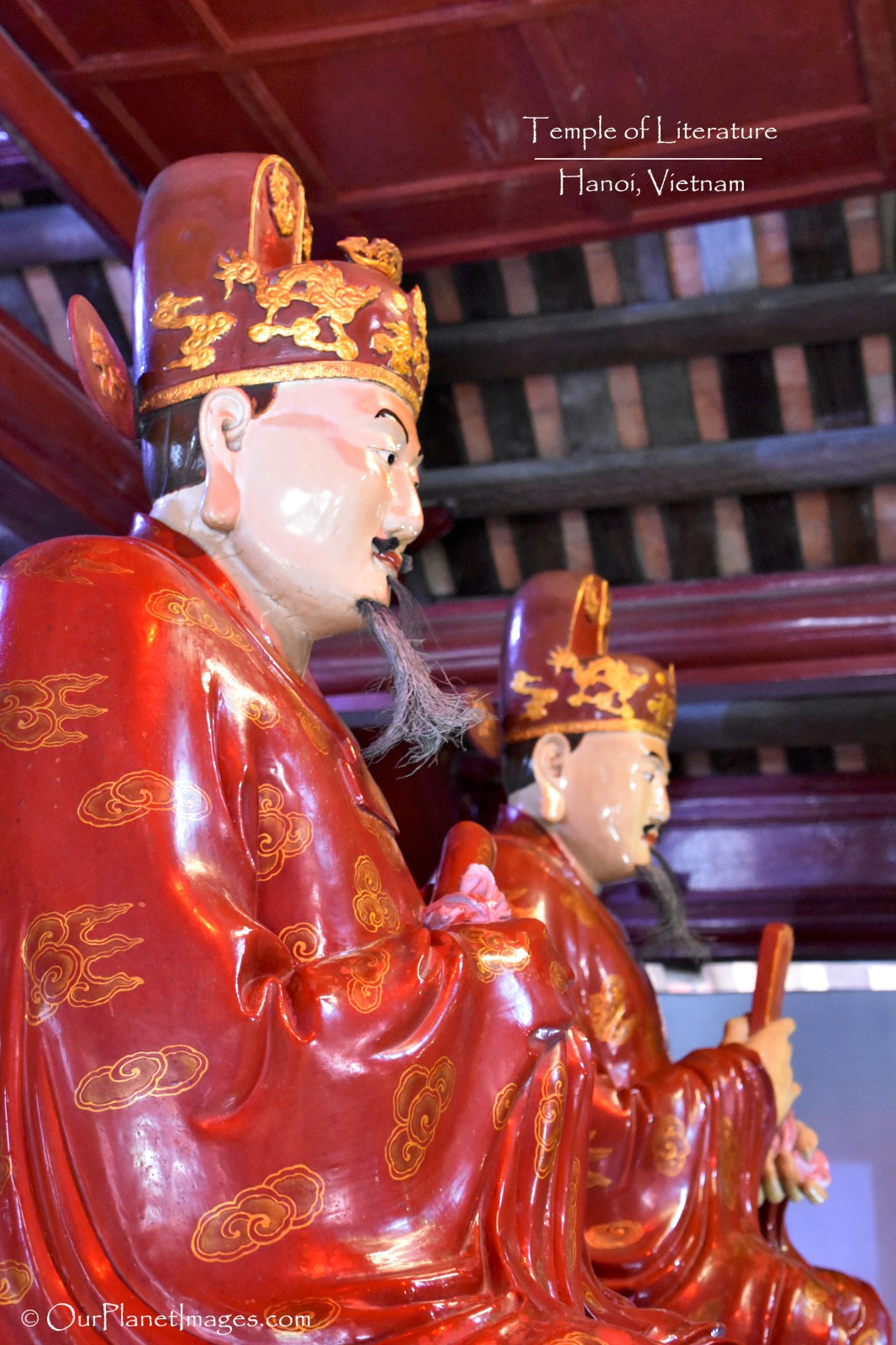
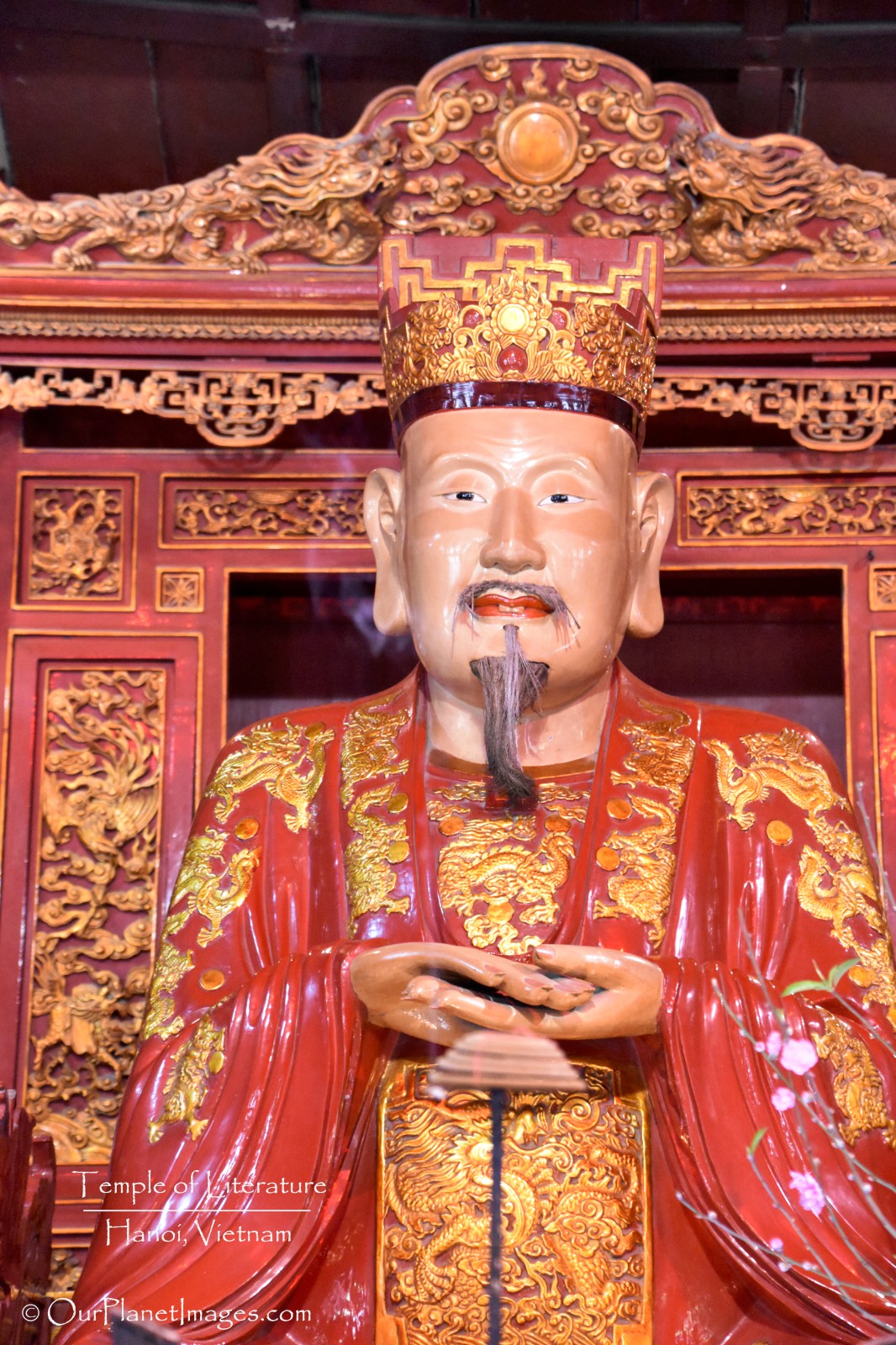
In addition to Thai Hoc House, the final courtyard includes a large drum and bell that are housed in separate pavilions one on each side of Thai Hoc House.
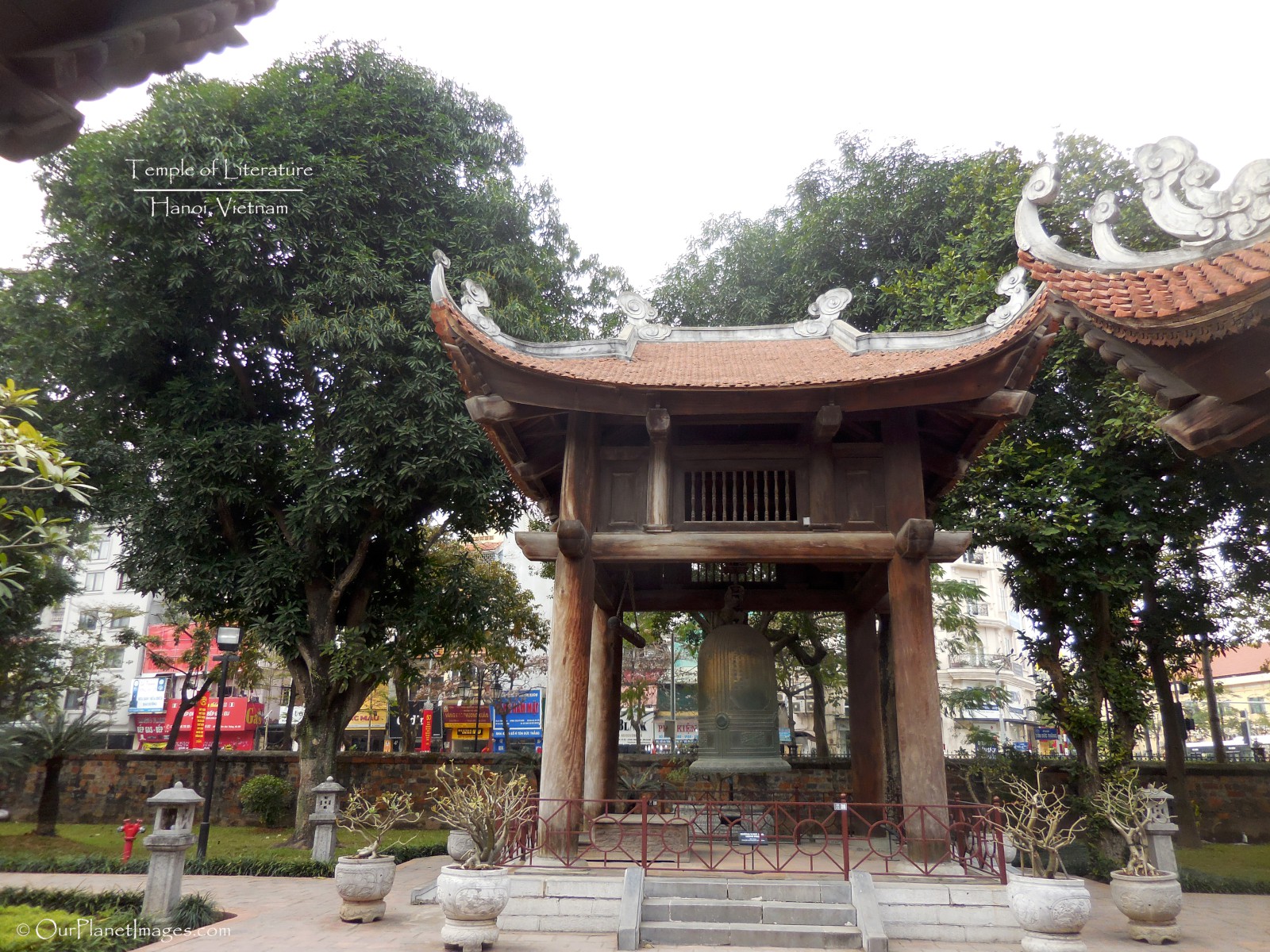
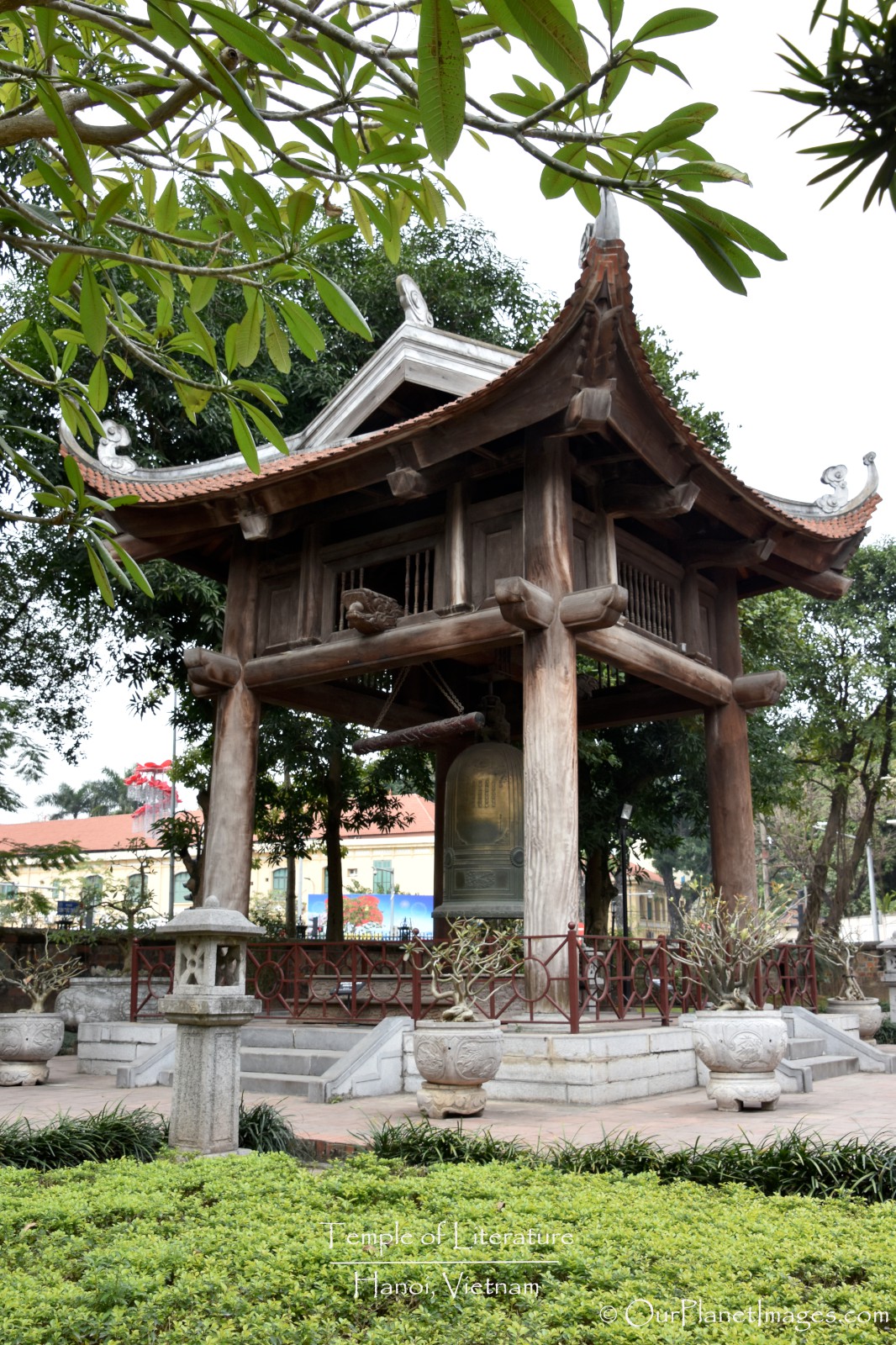
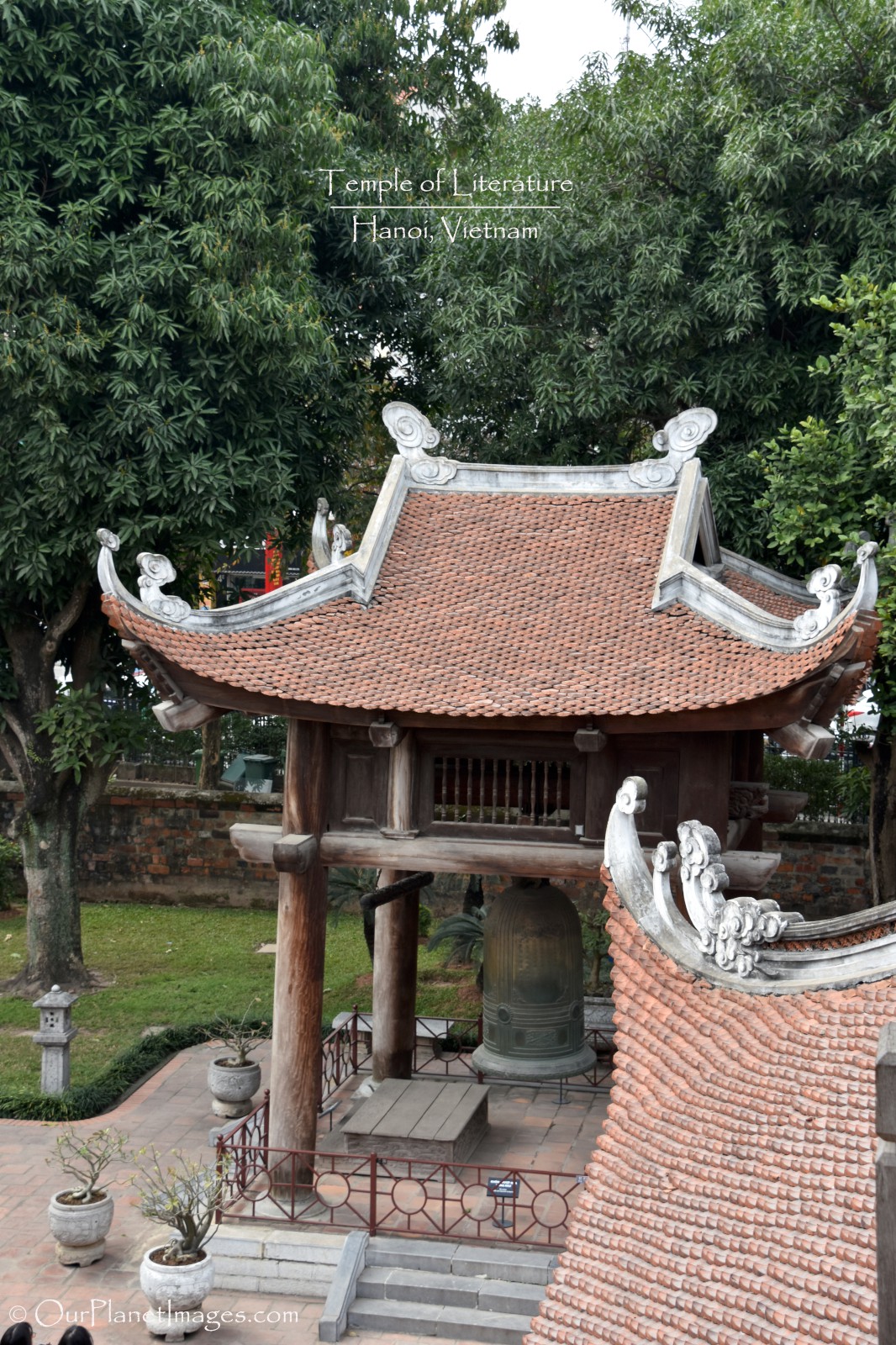
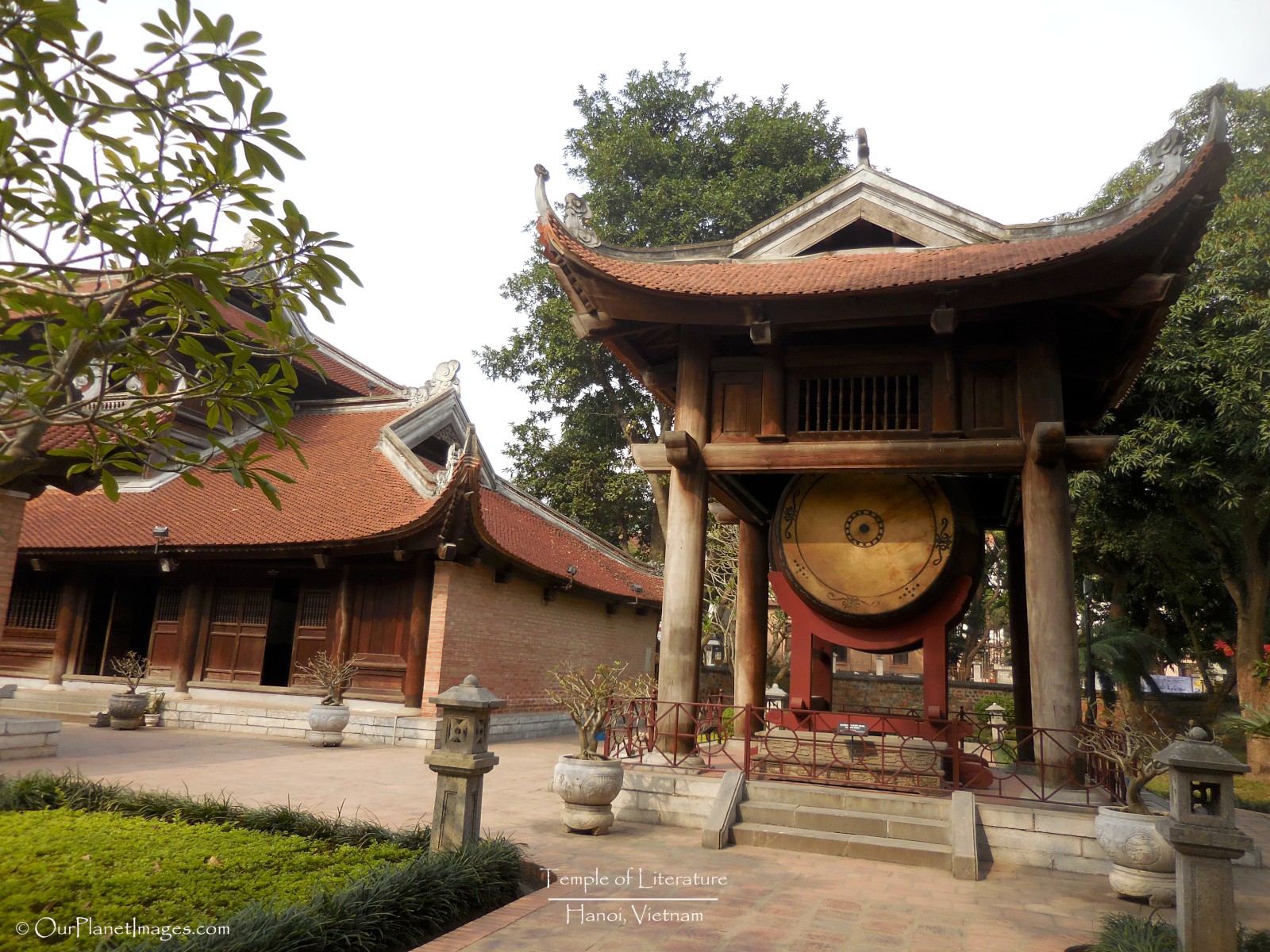

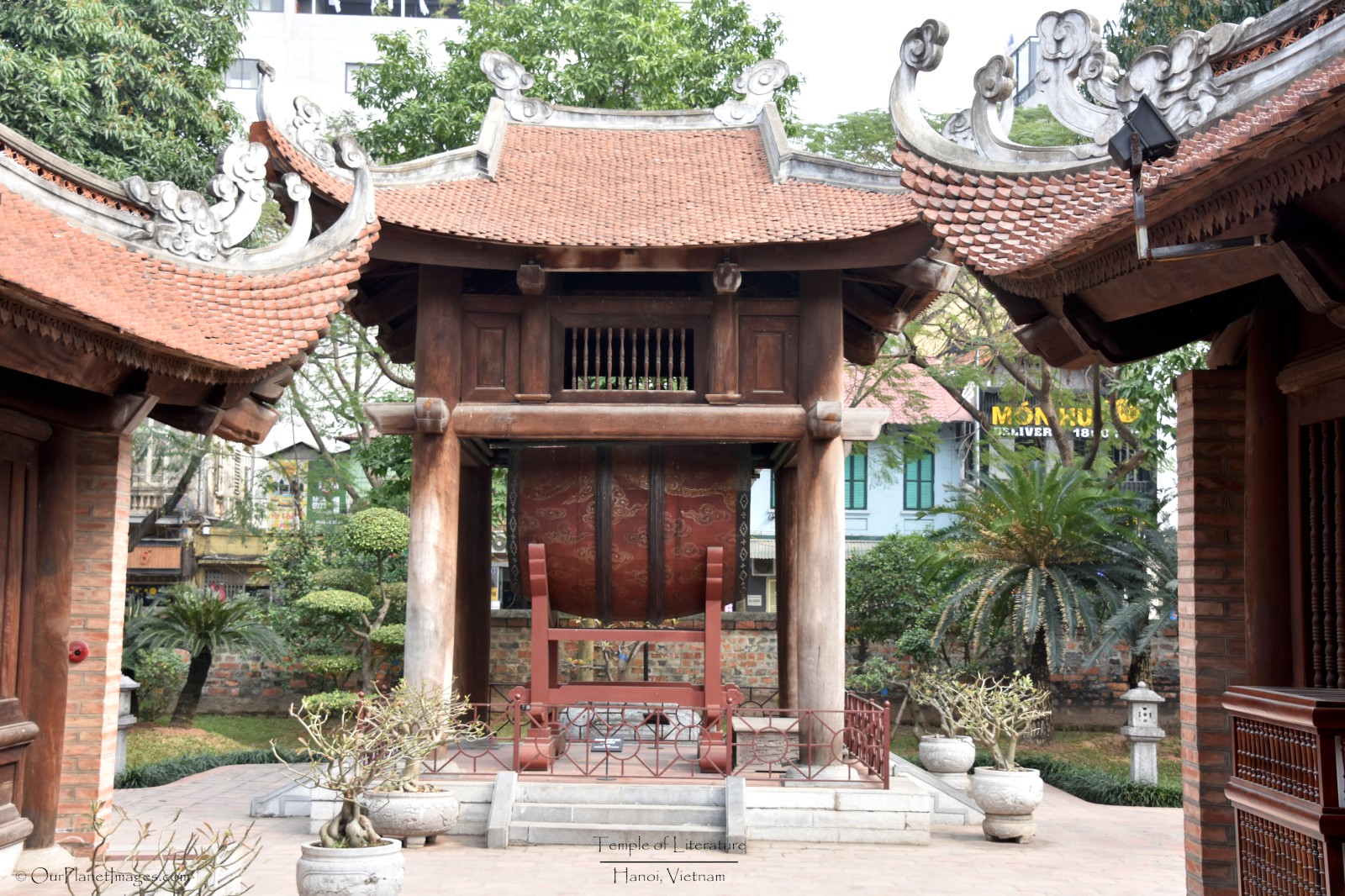
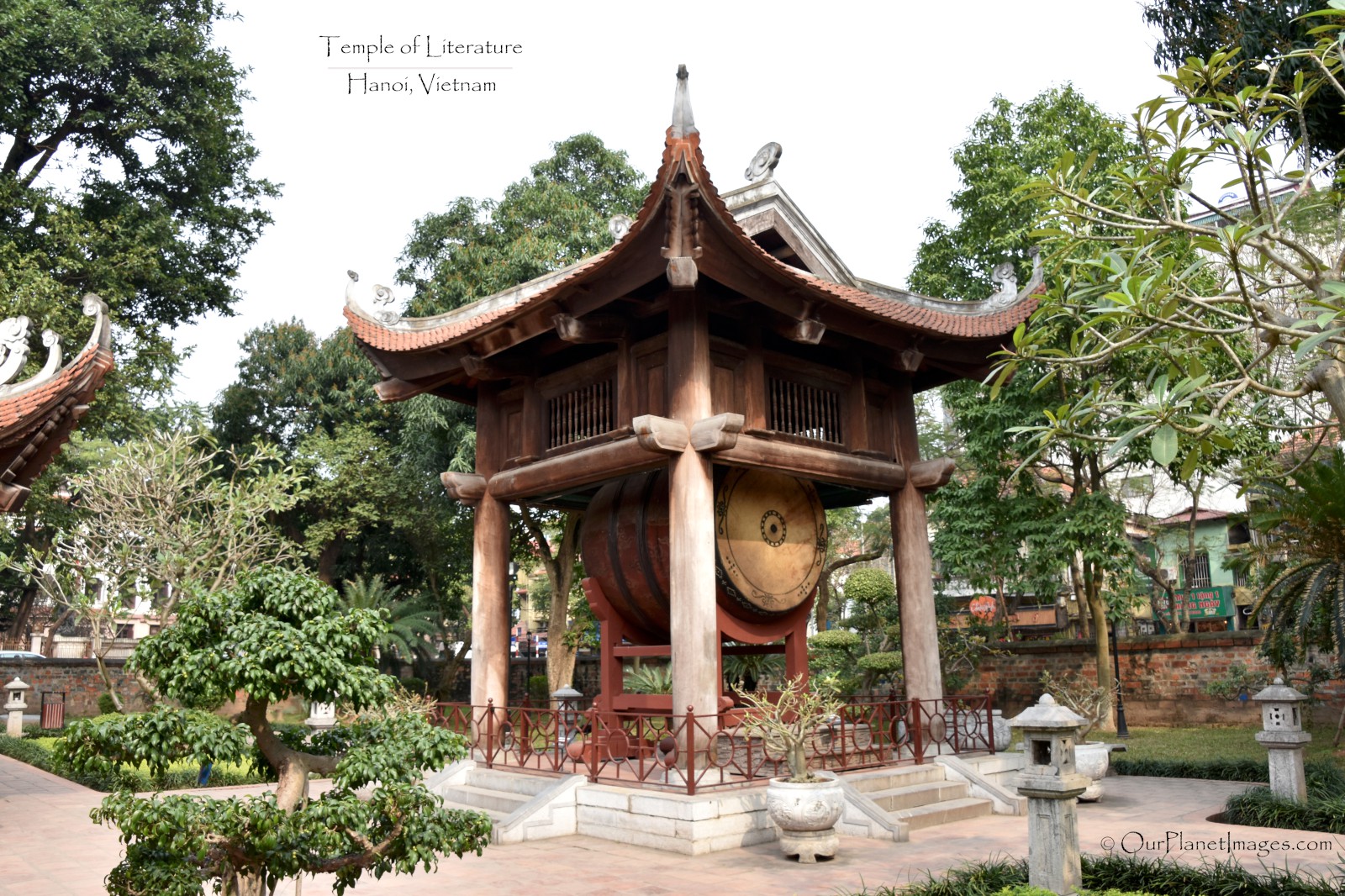
In front of the pavilion housing the large drum there is a side gate that allows passage back to the fourth courtyard. The thing that makes this gate fascinating is there is an ancient tree that is growing on both sides of the courtyard separation wall. The photo of this gate really provides an image of how long this temple has been in this location.

Related Posts

